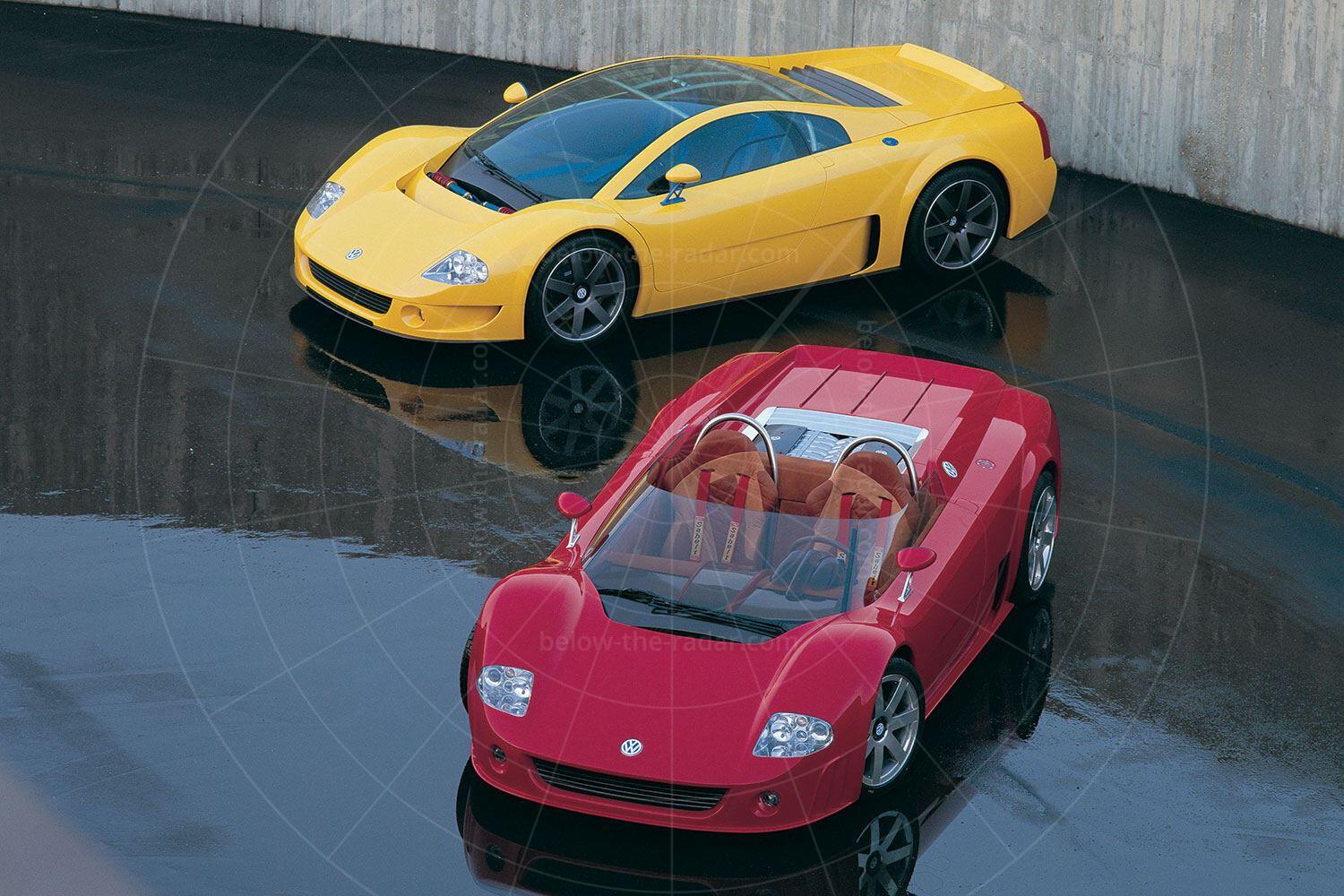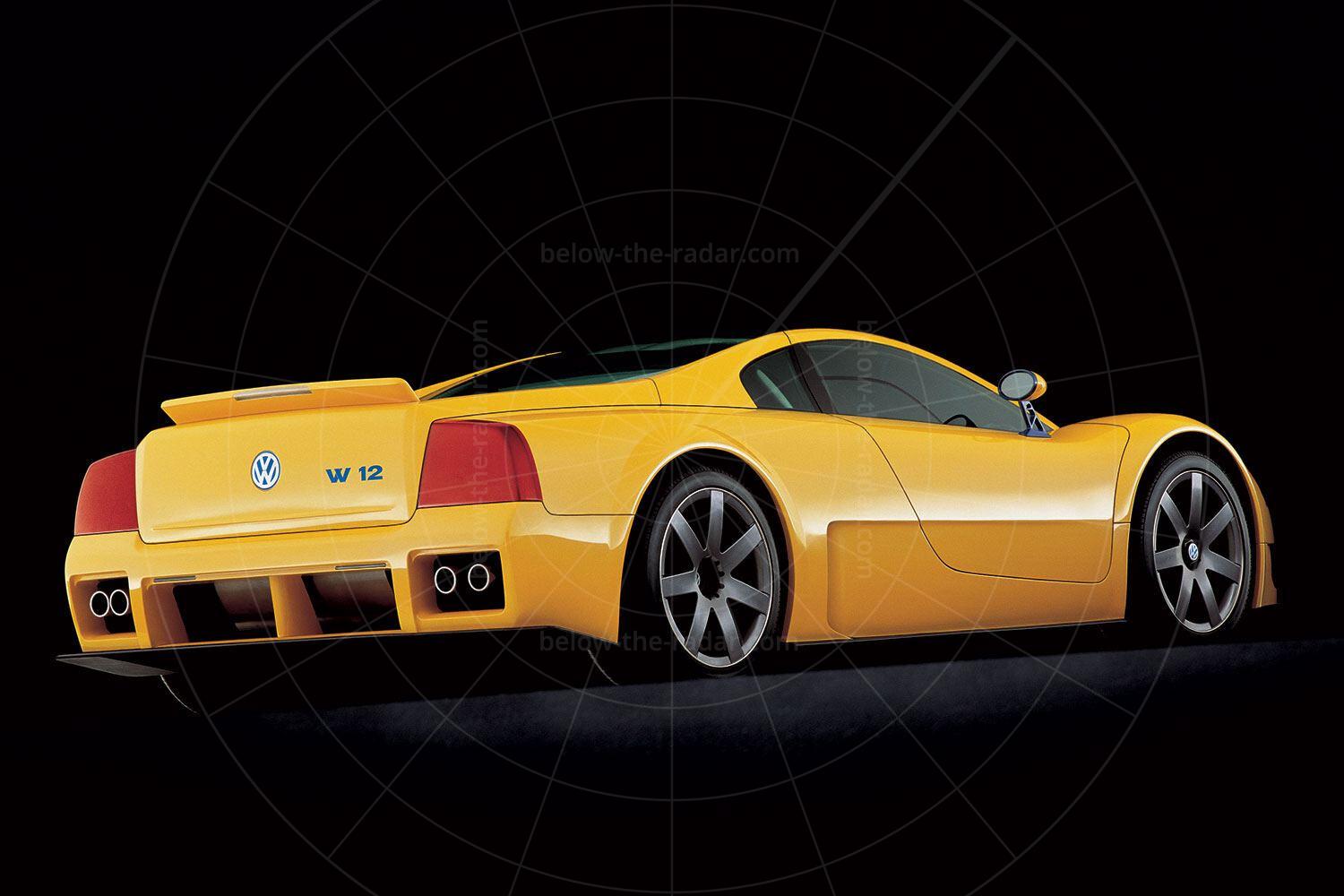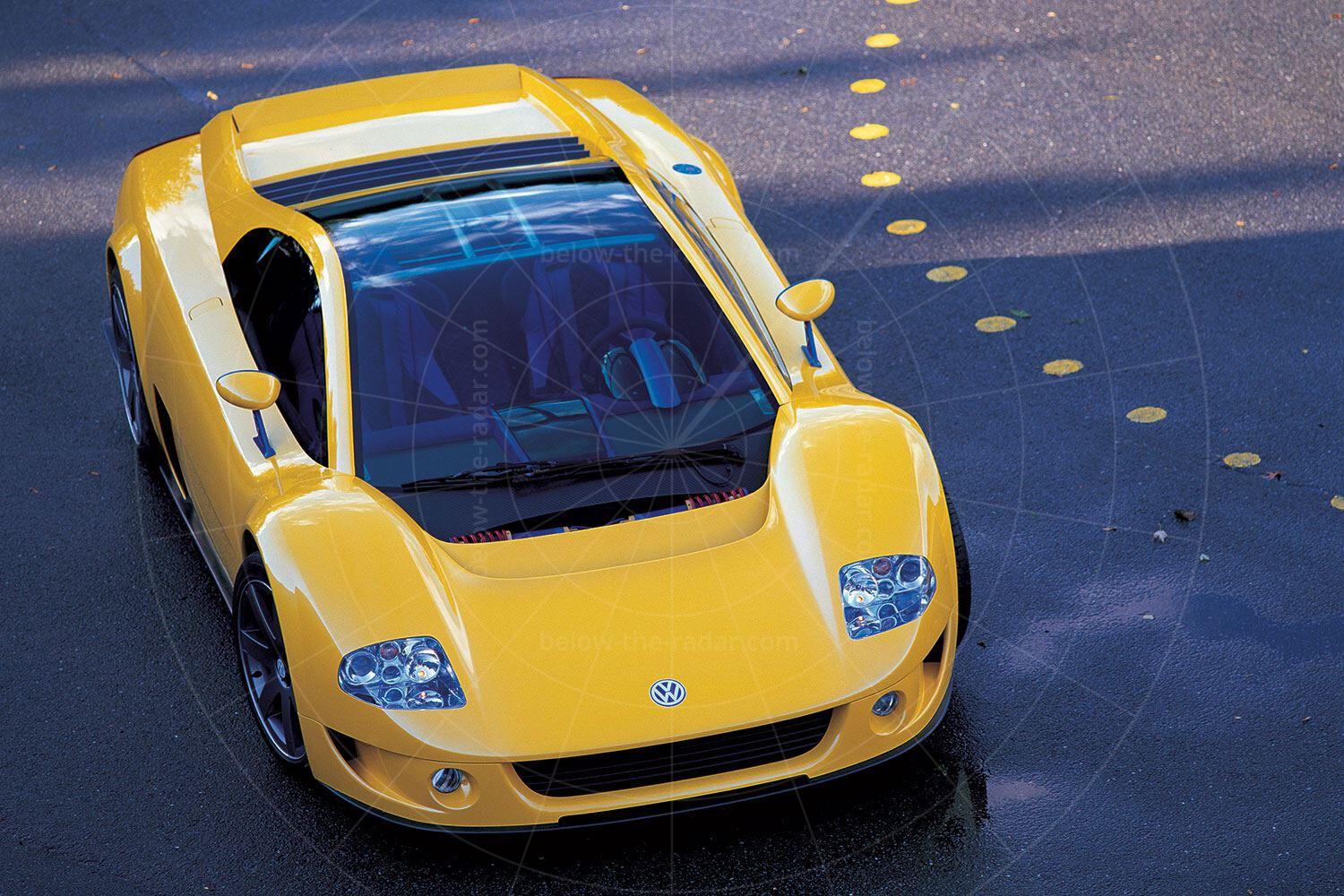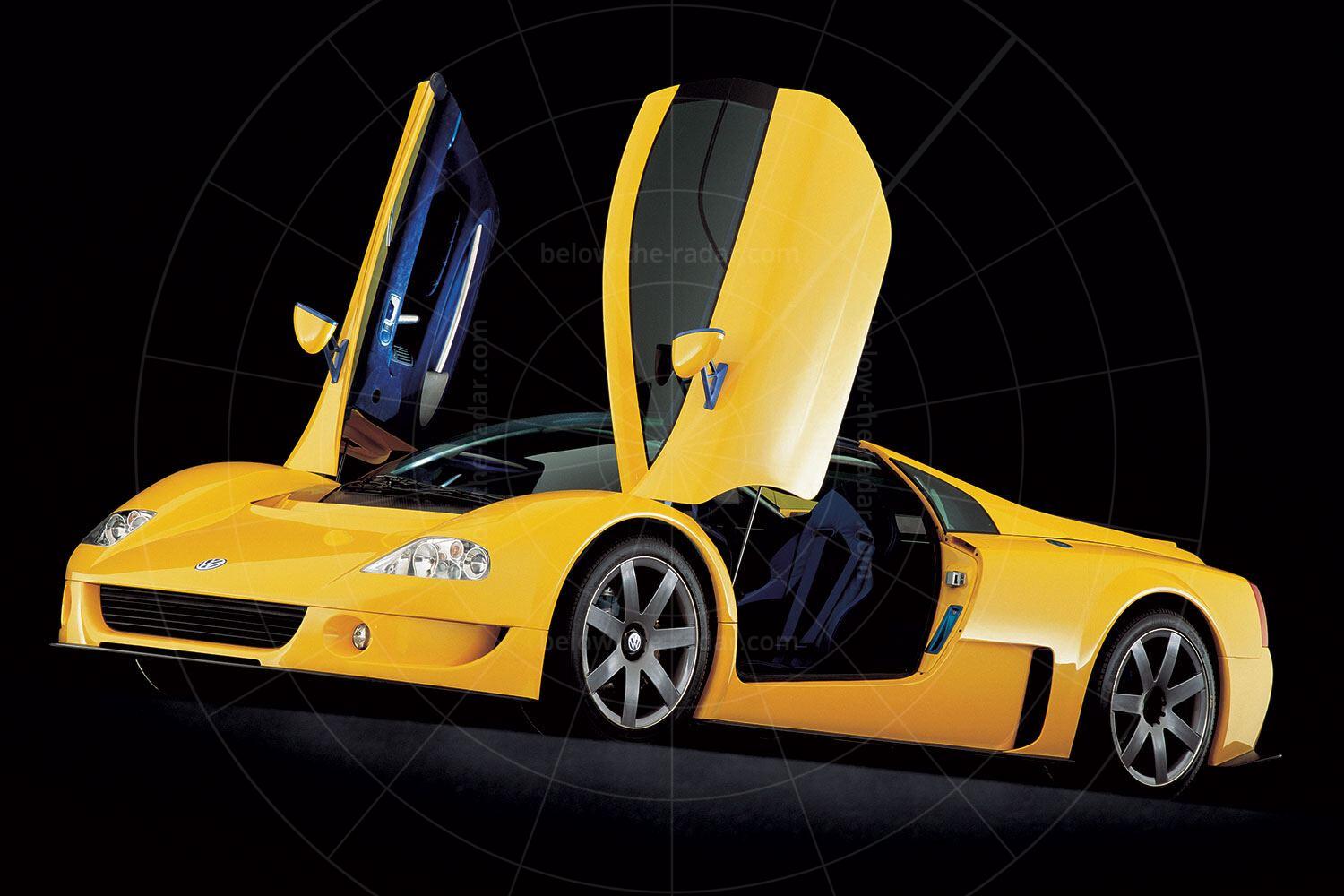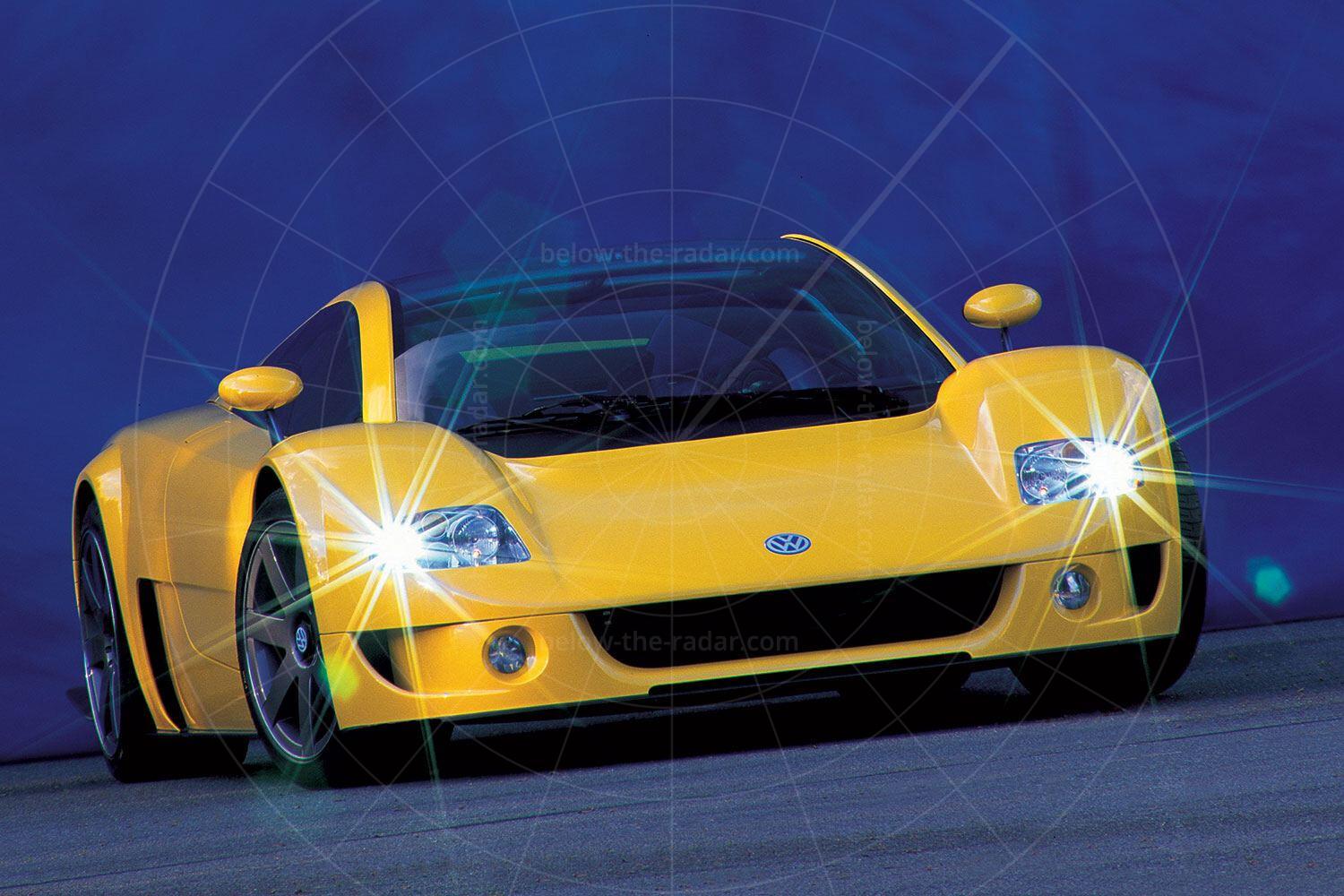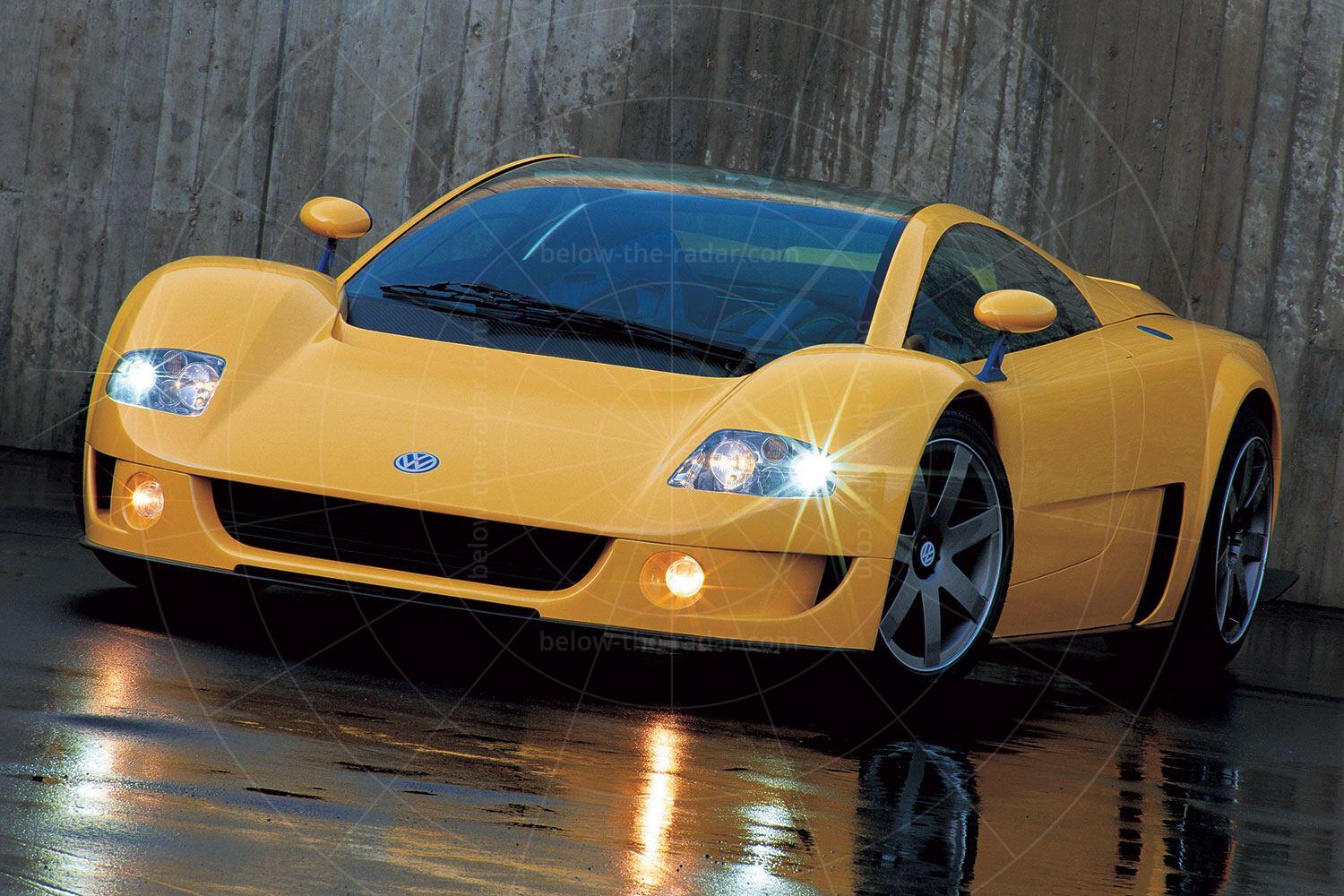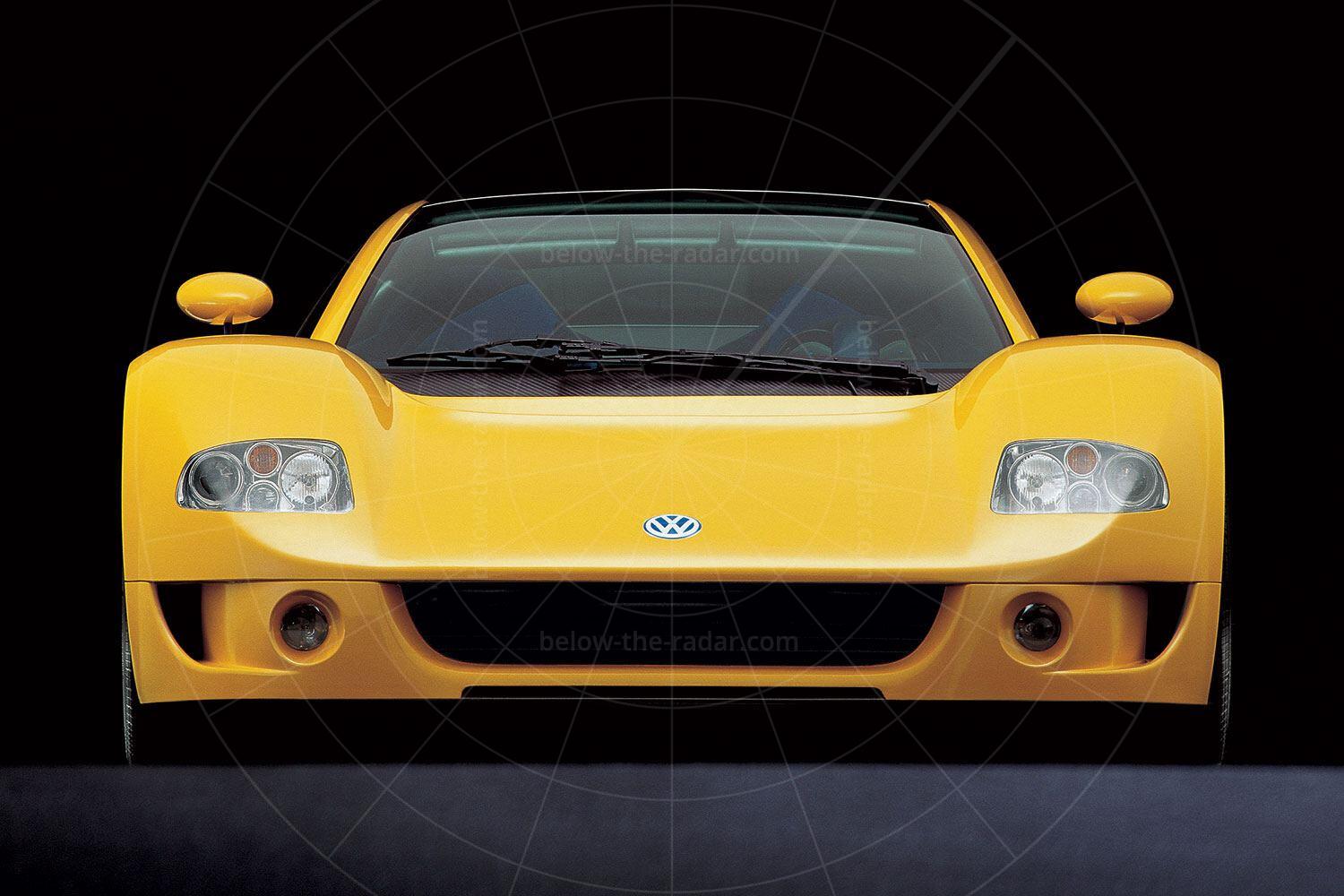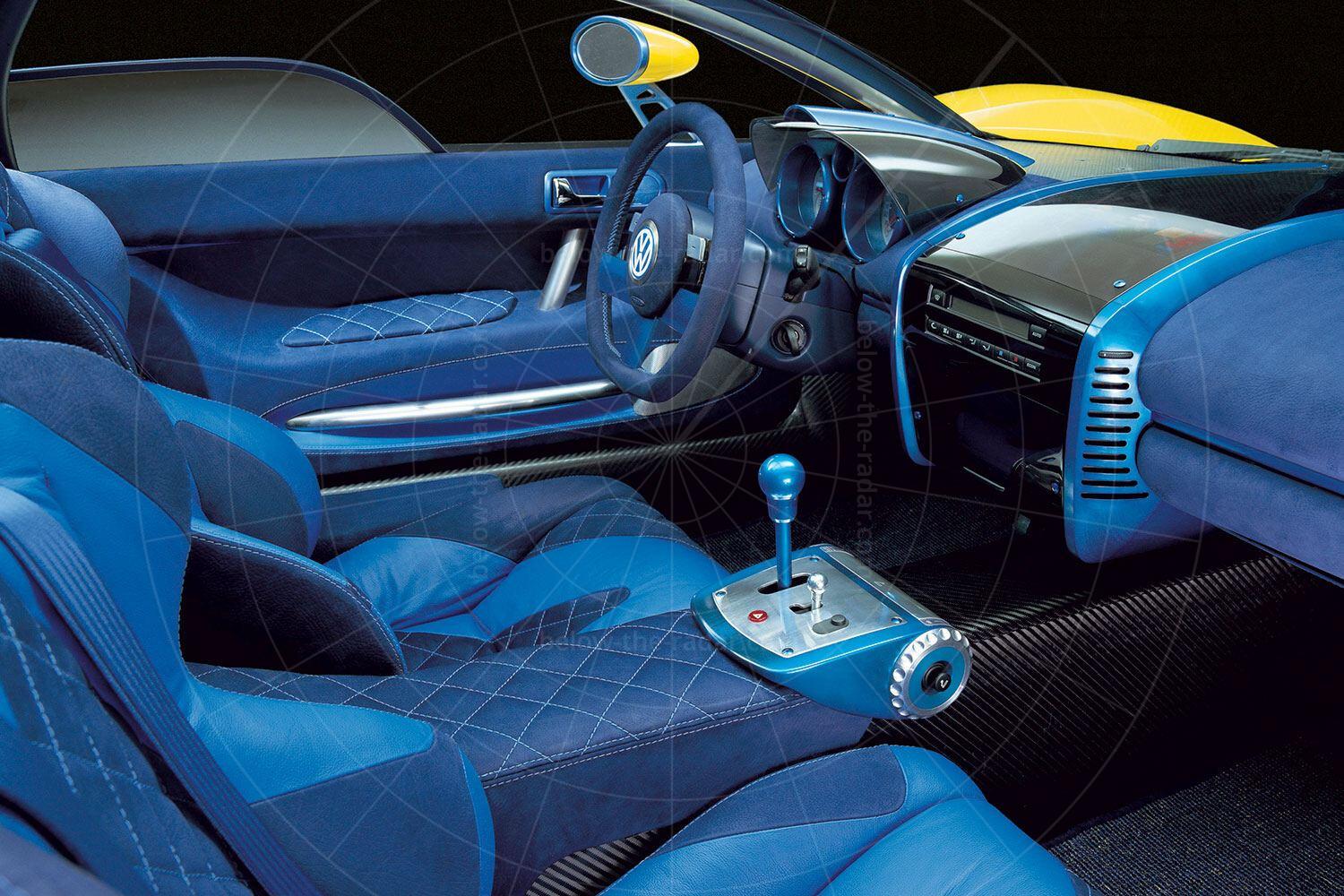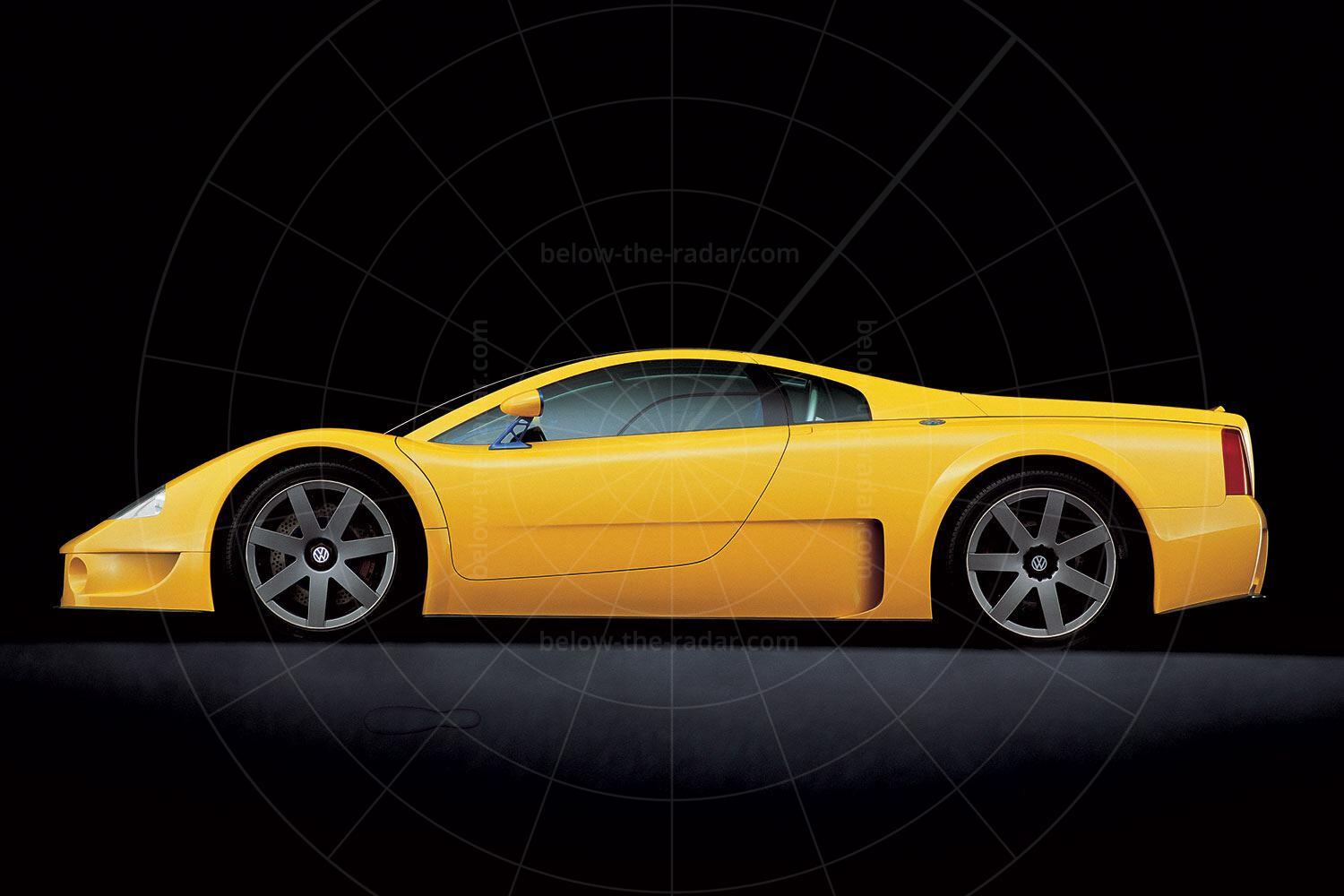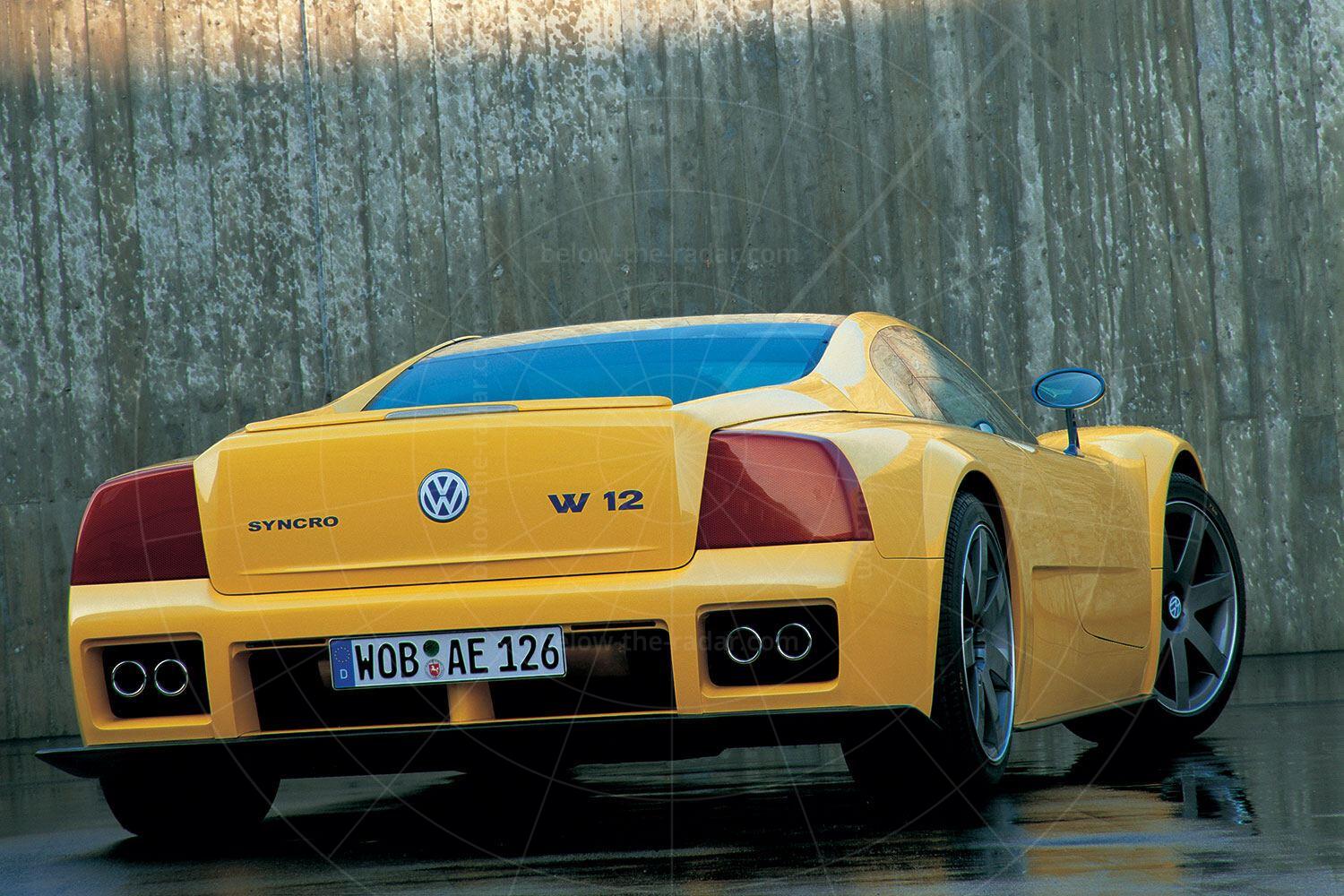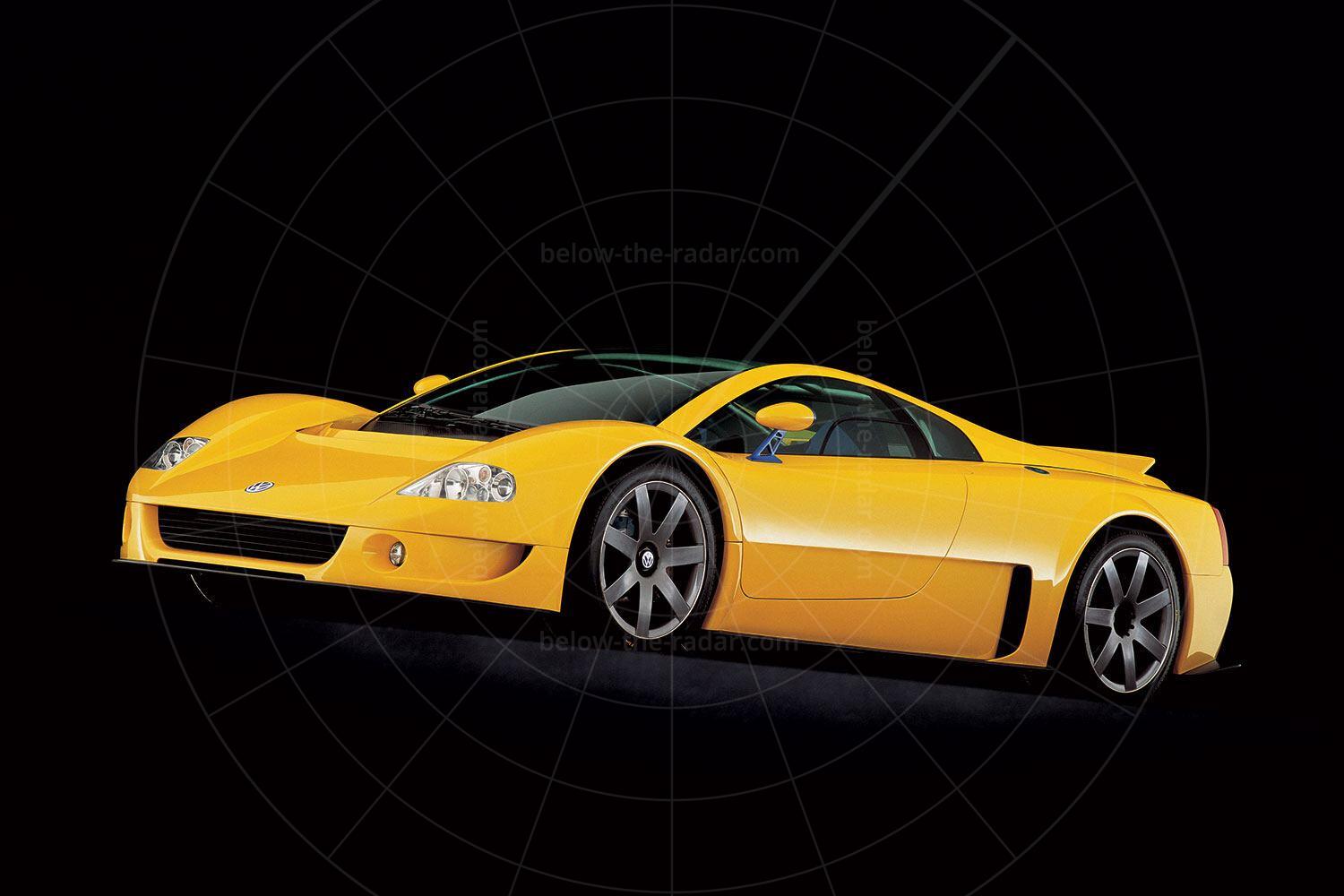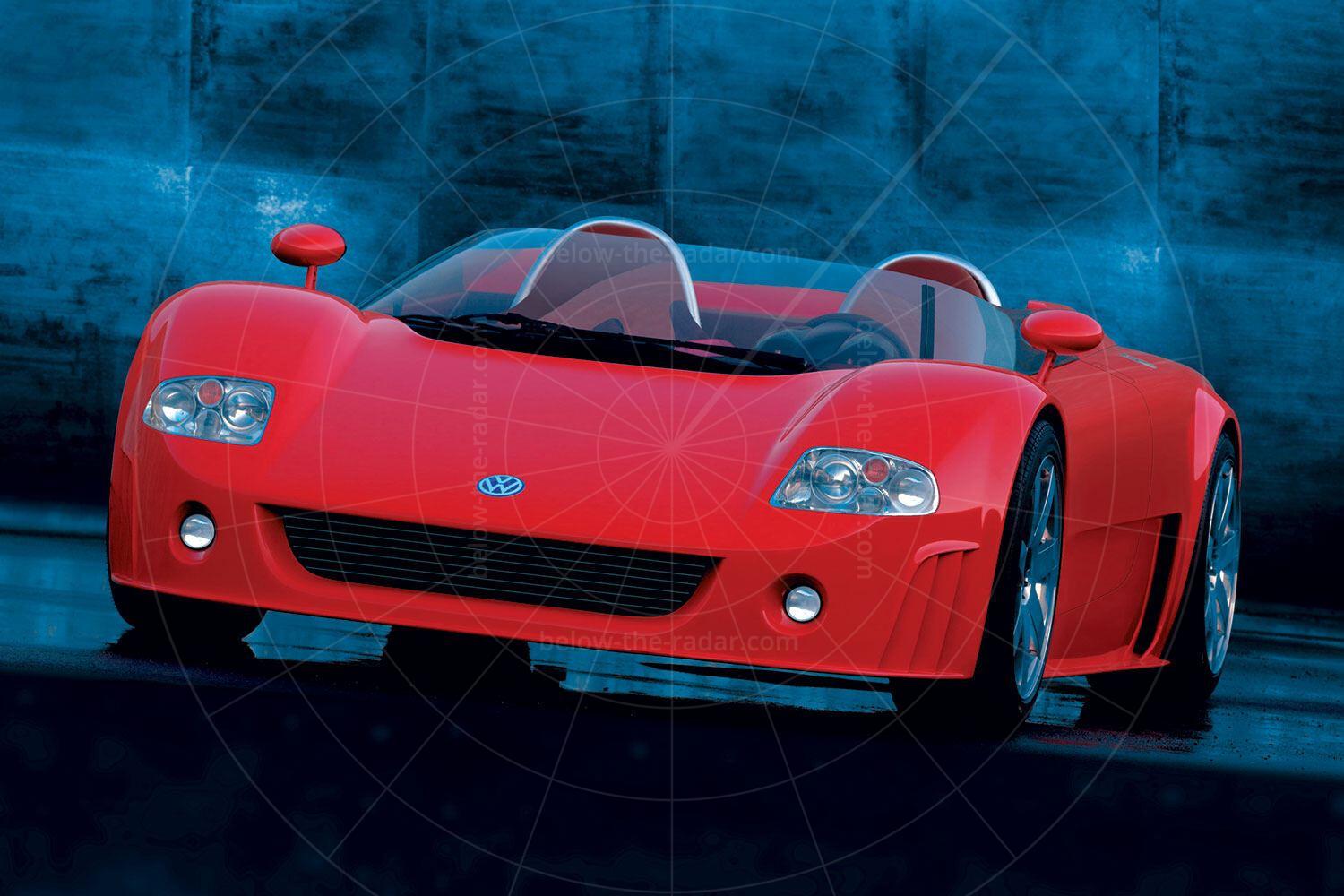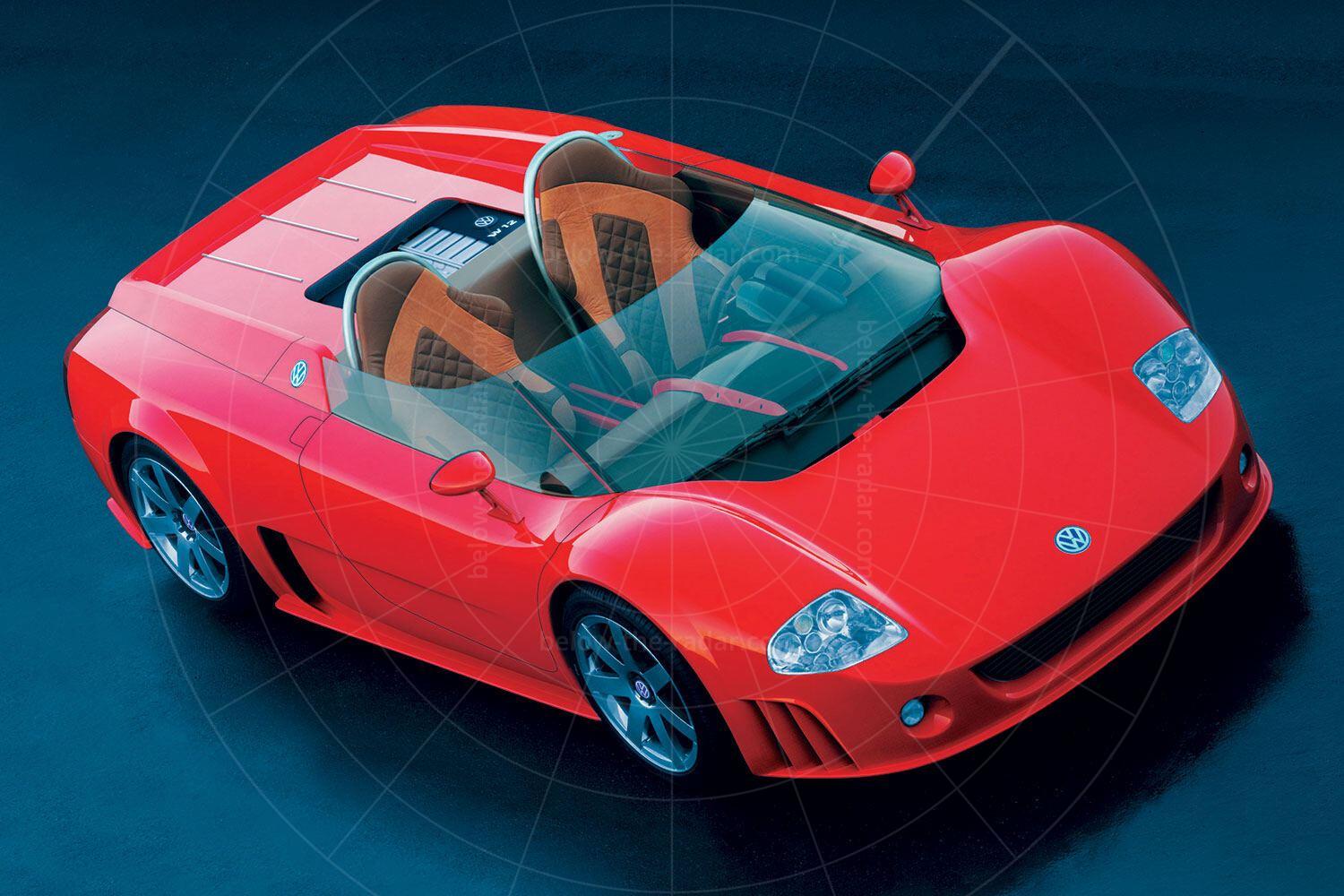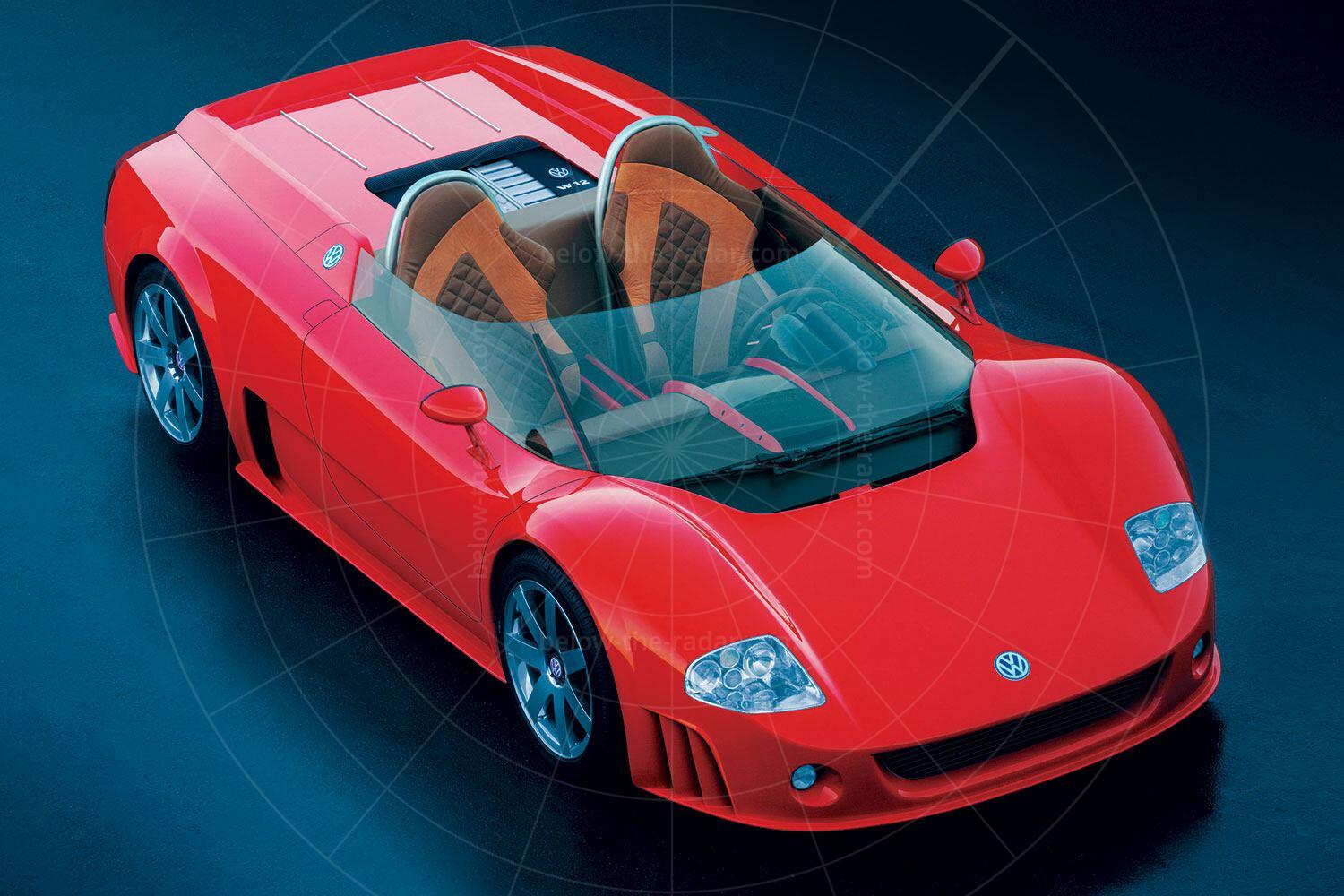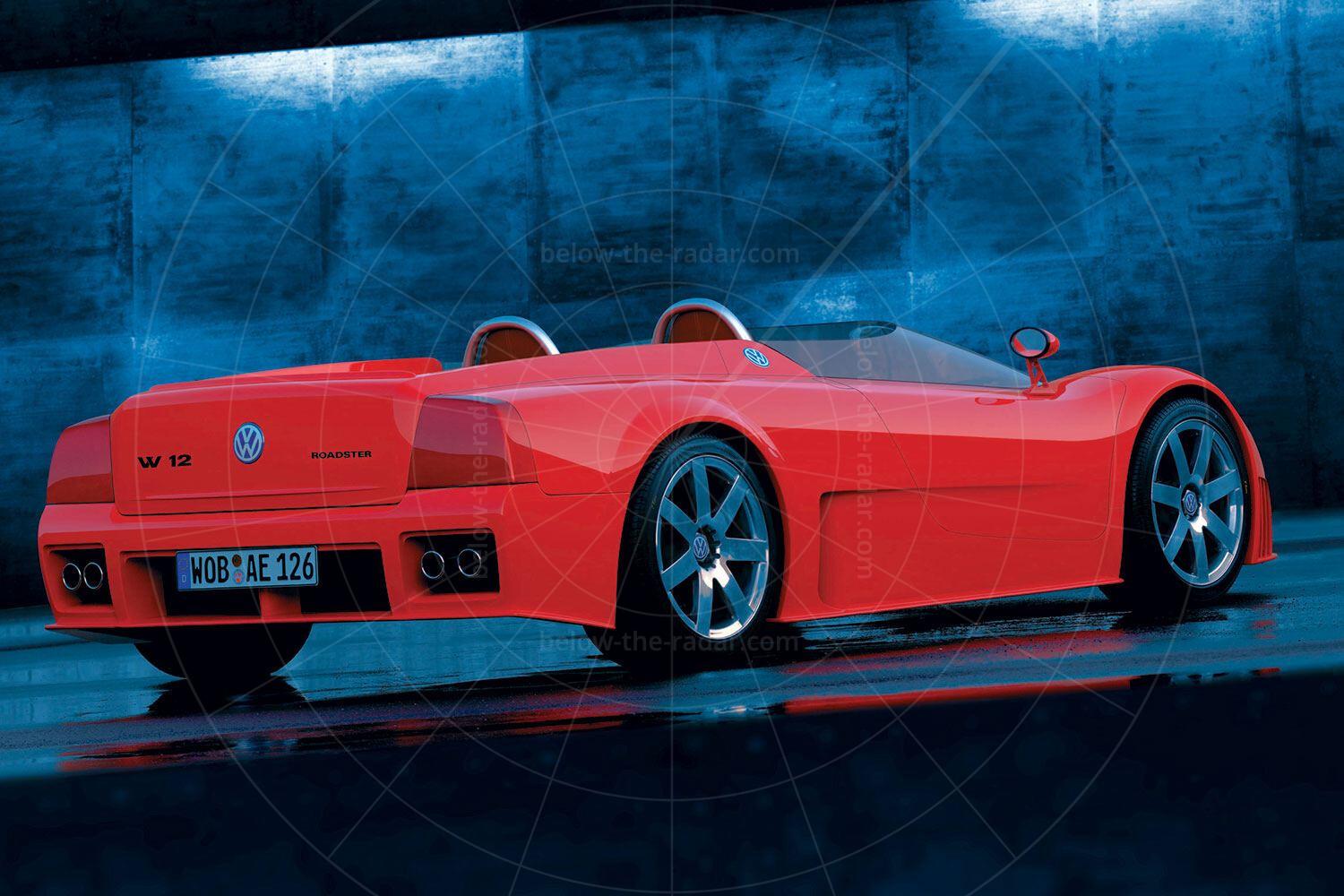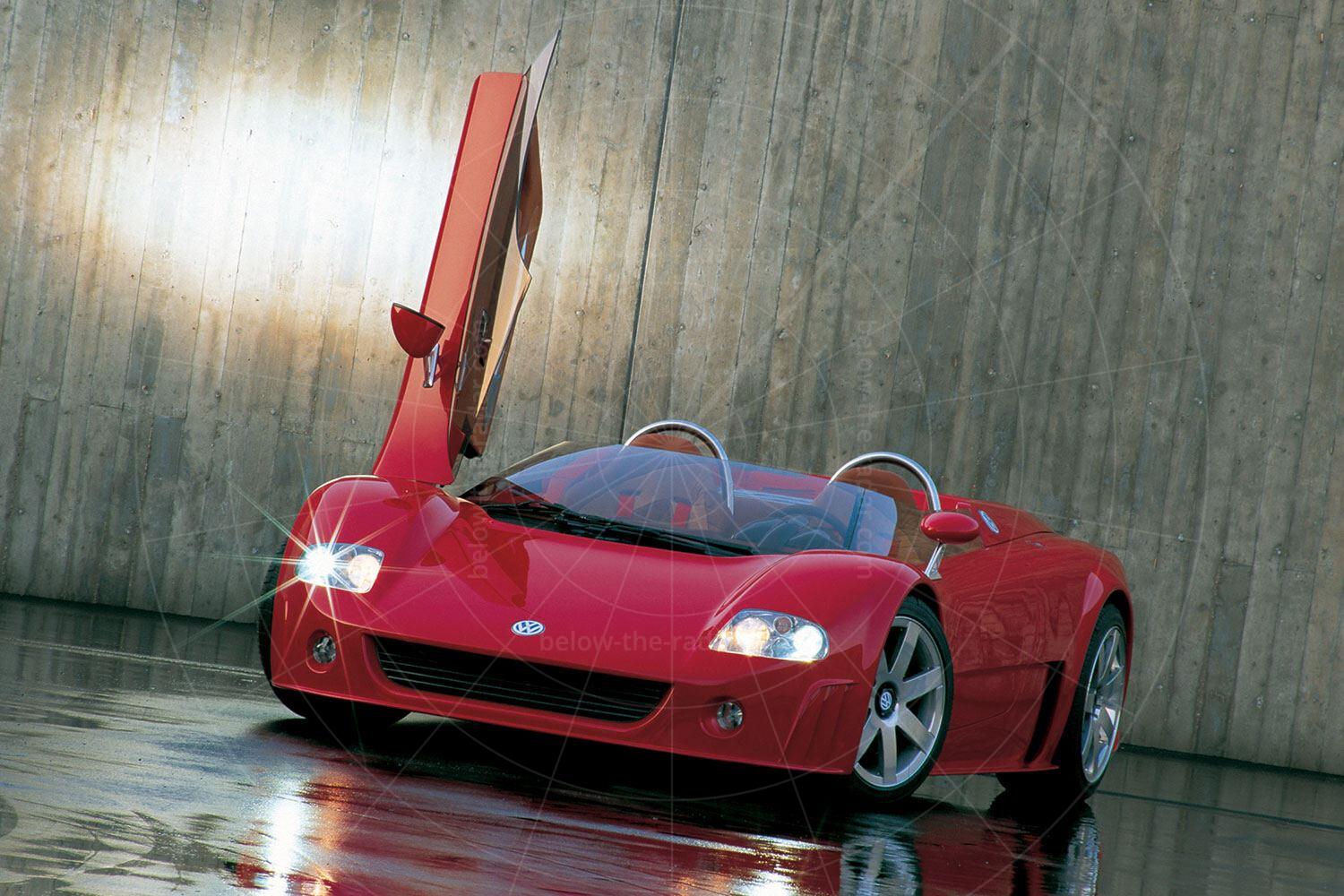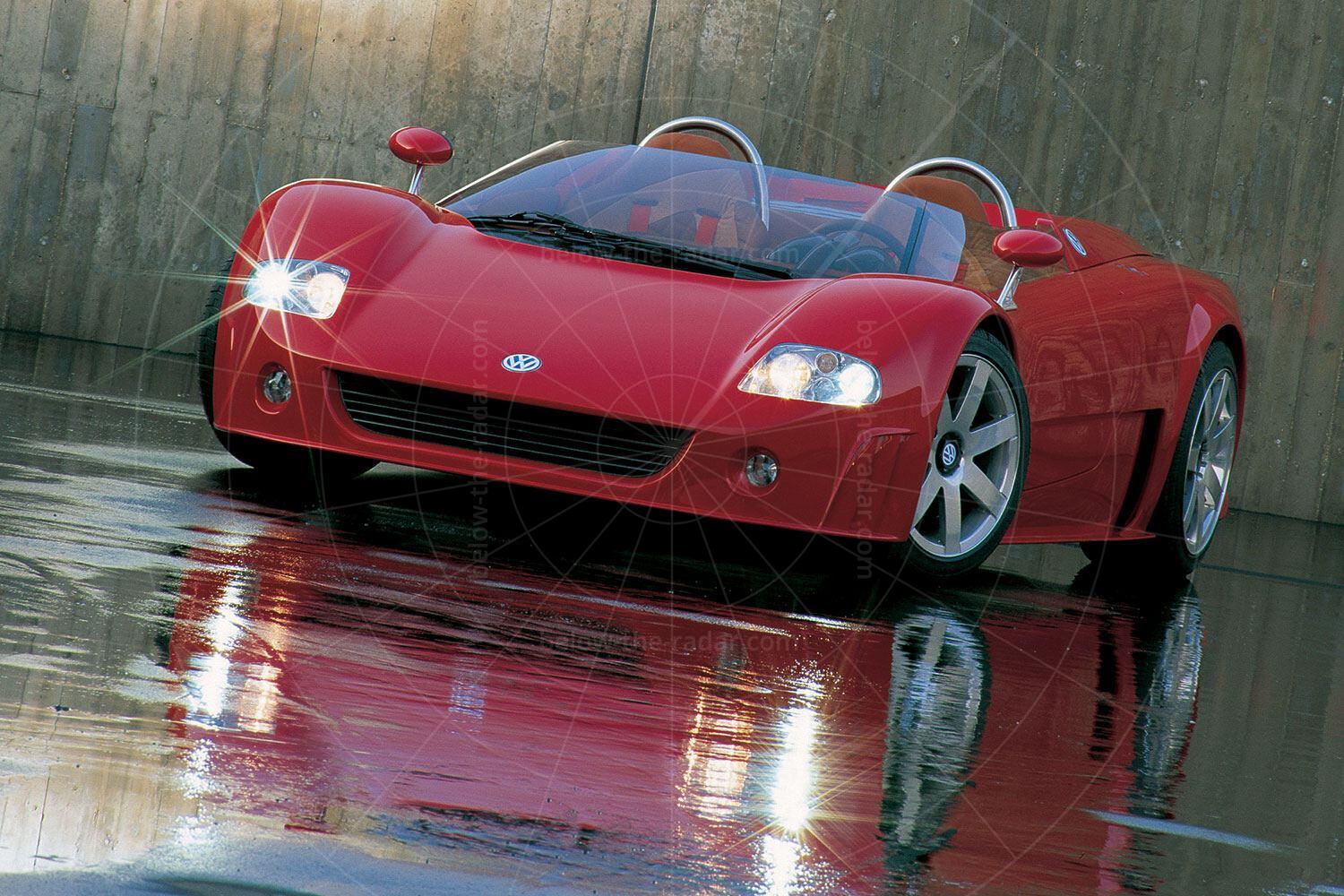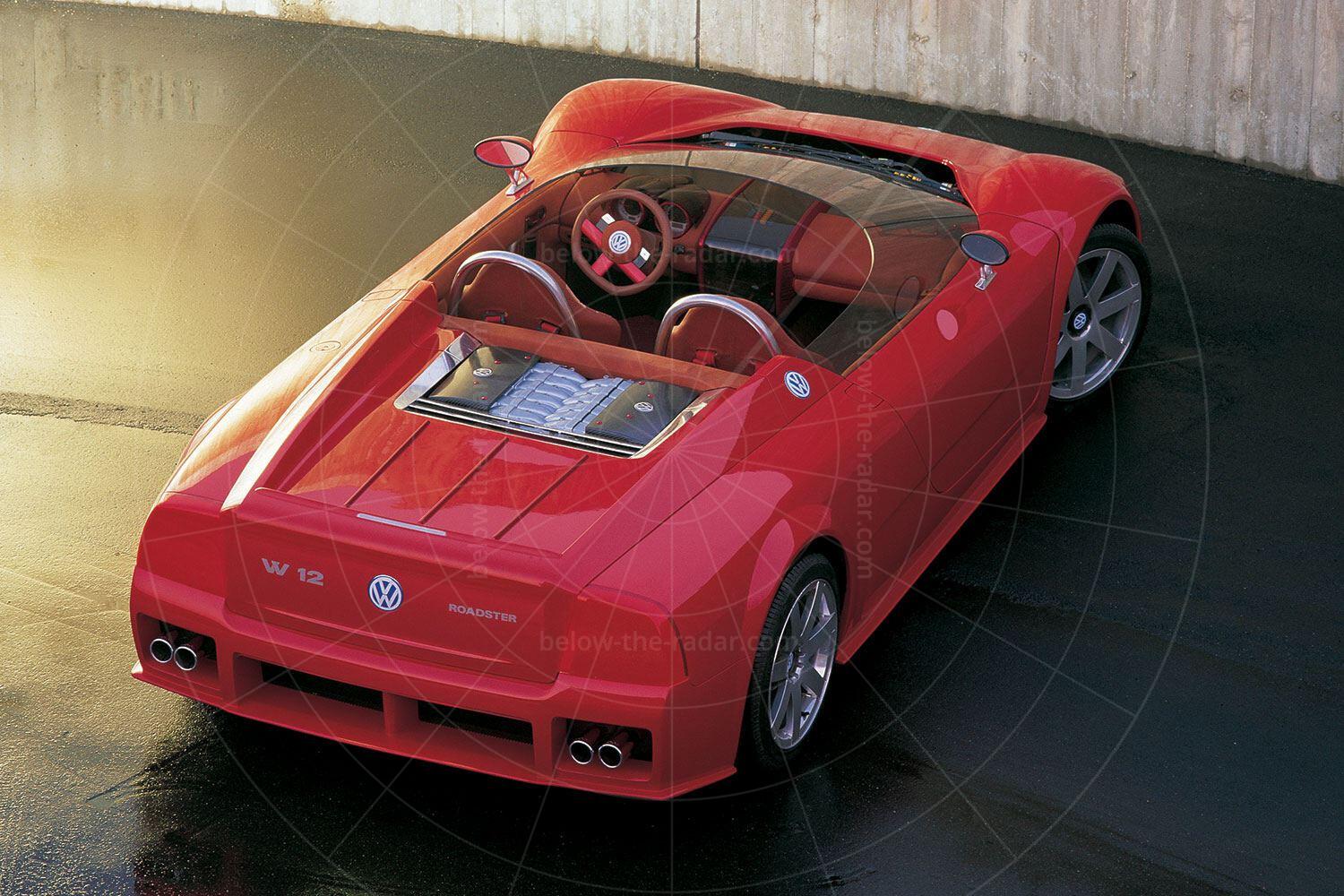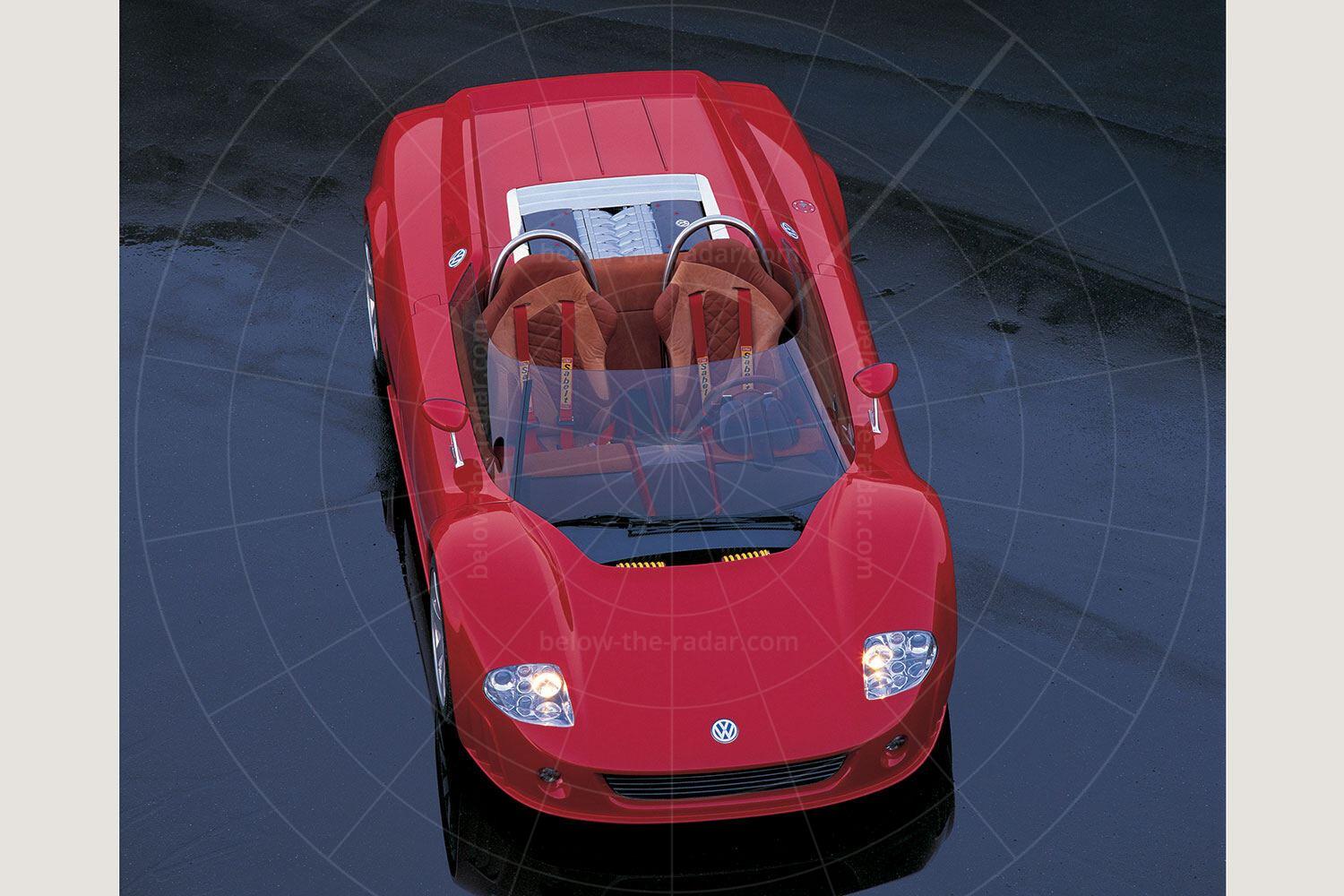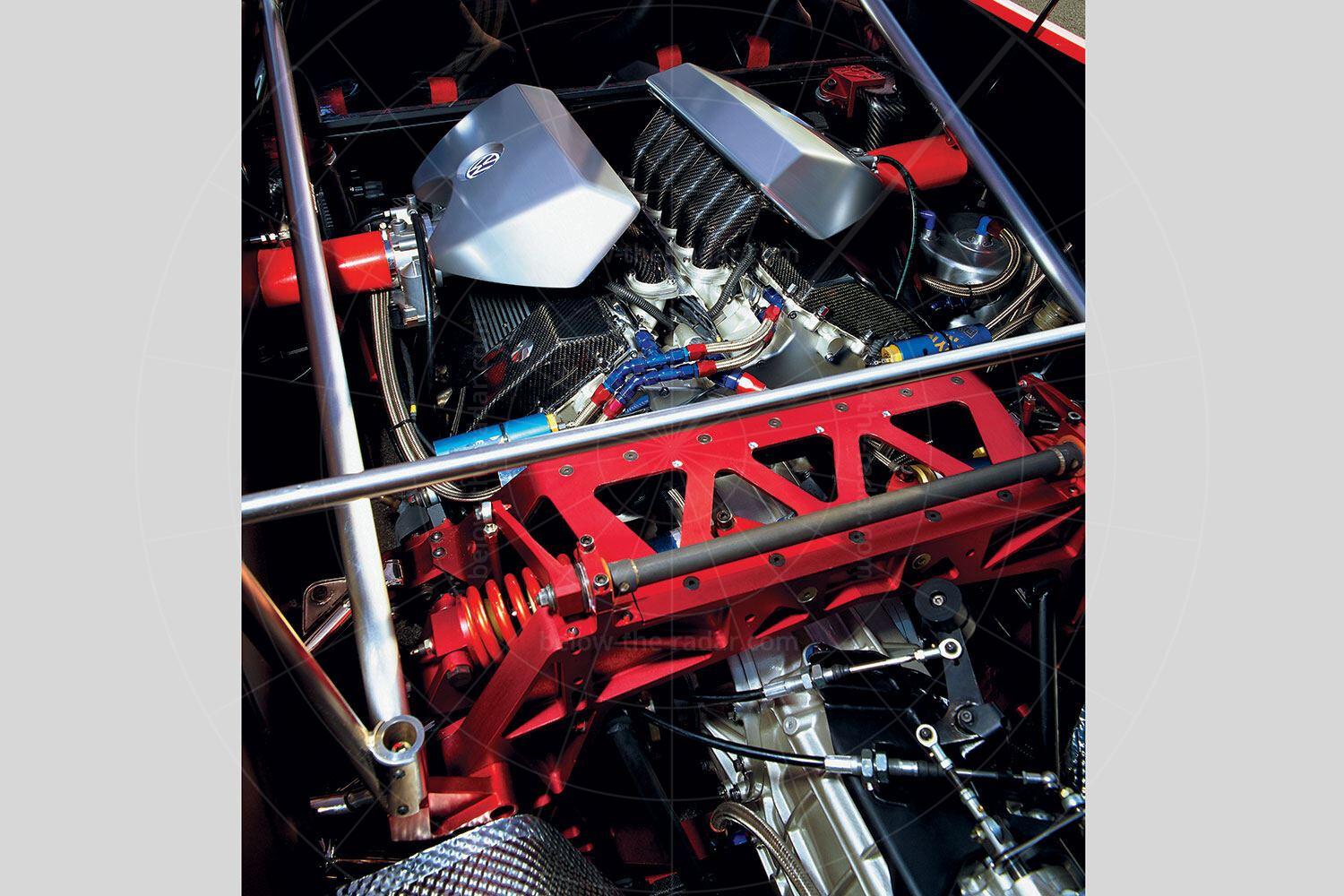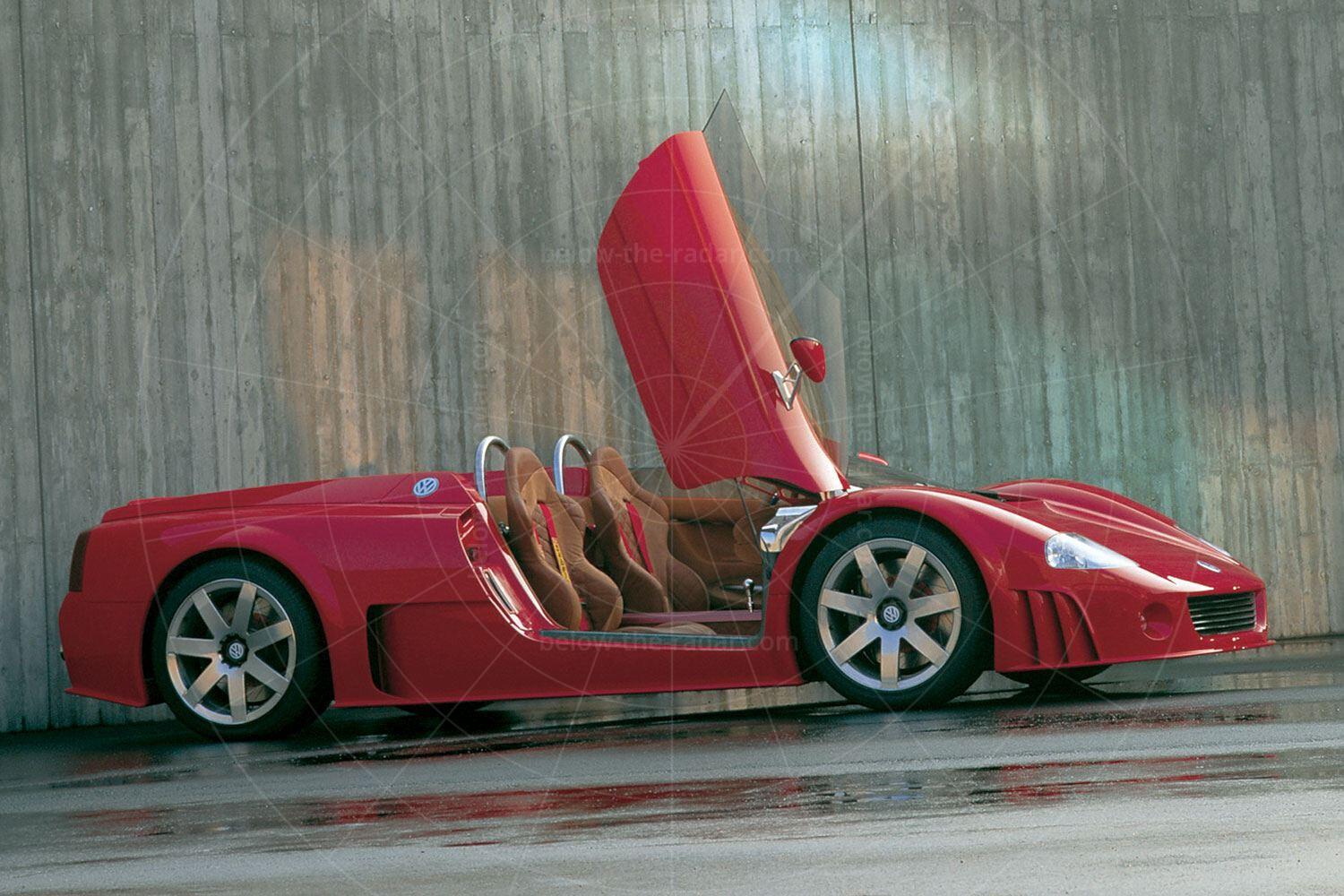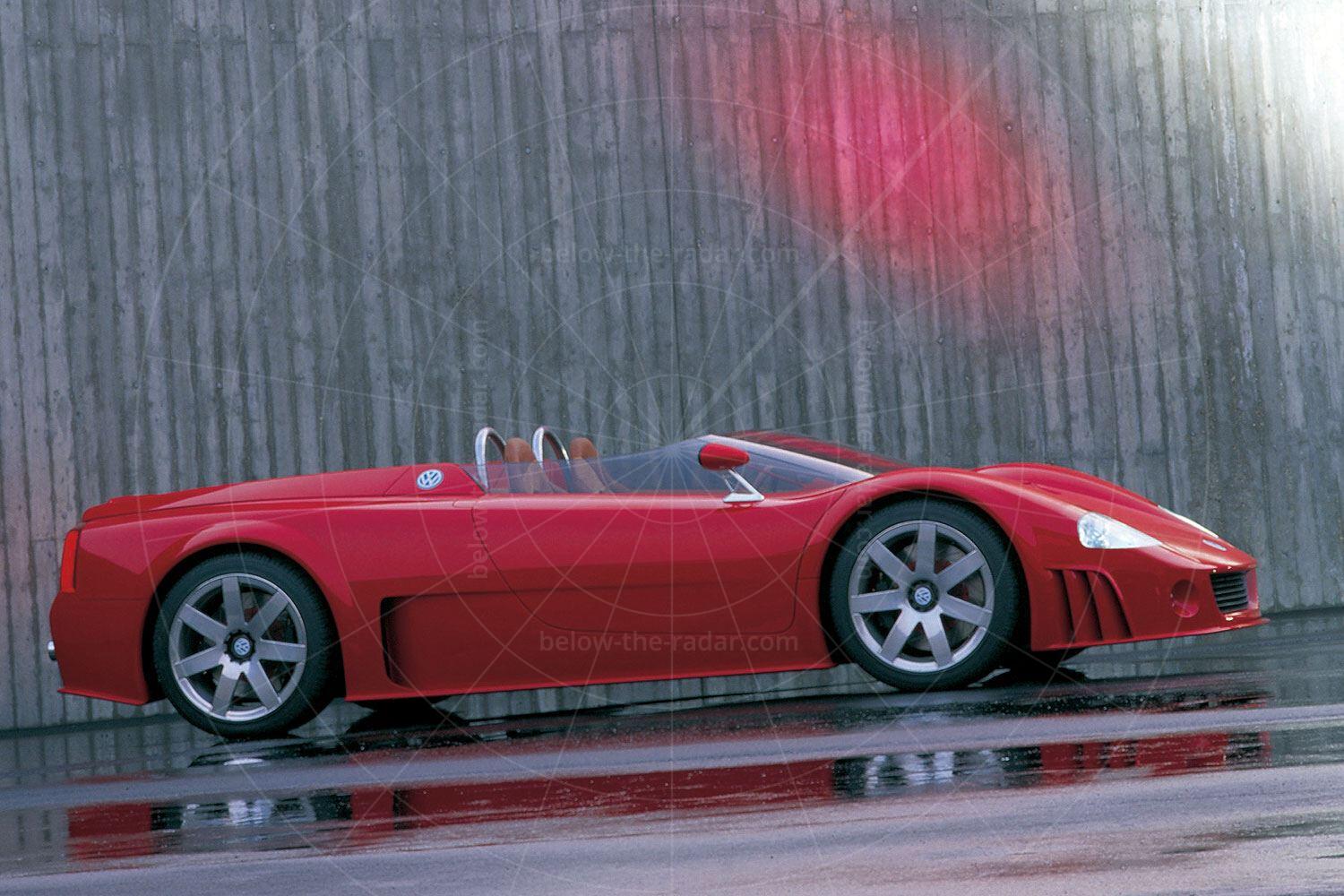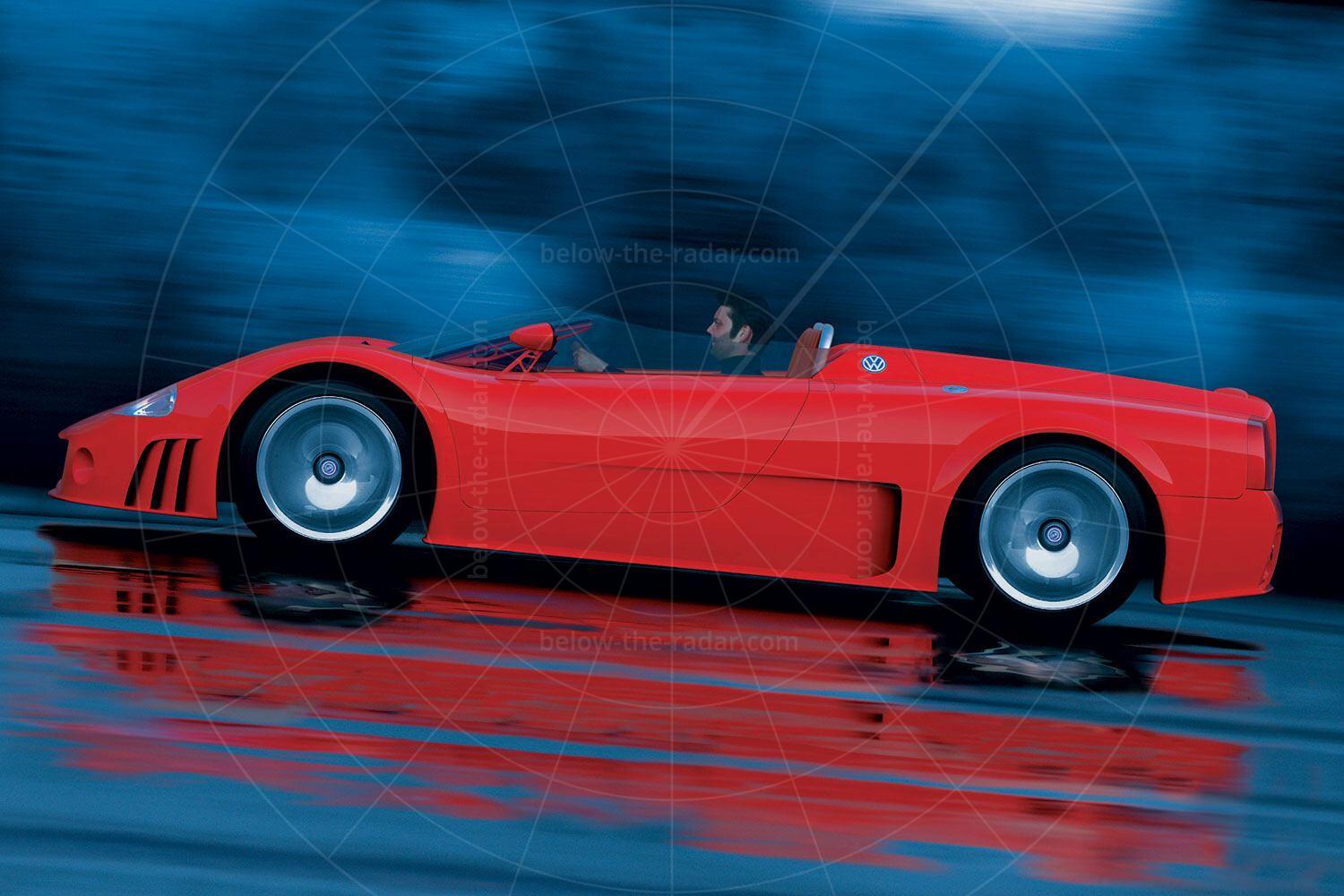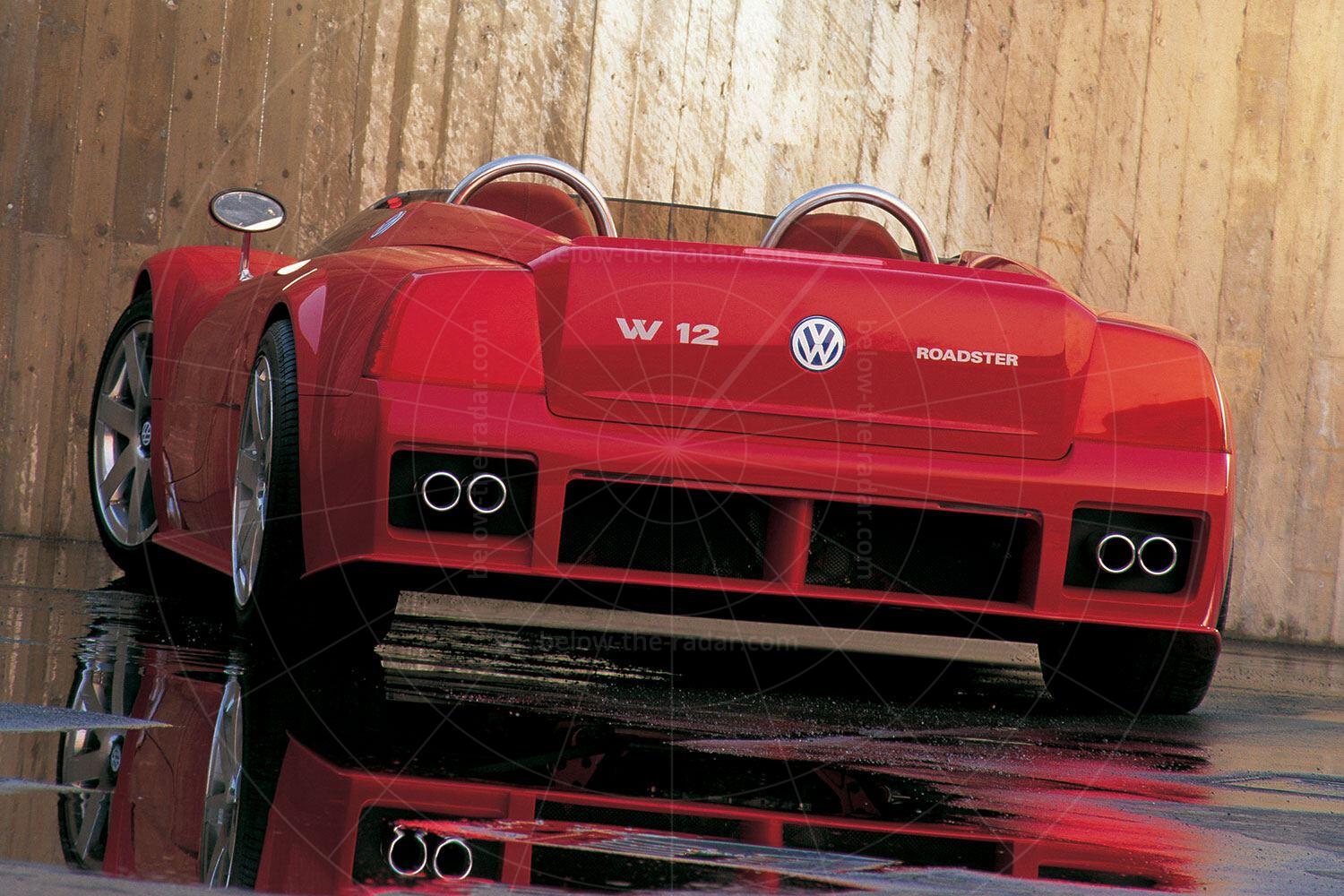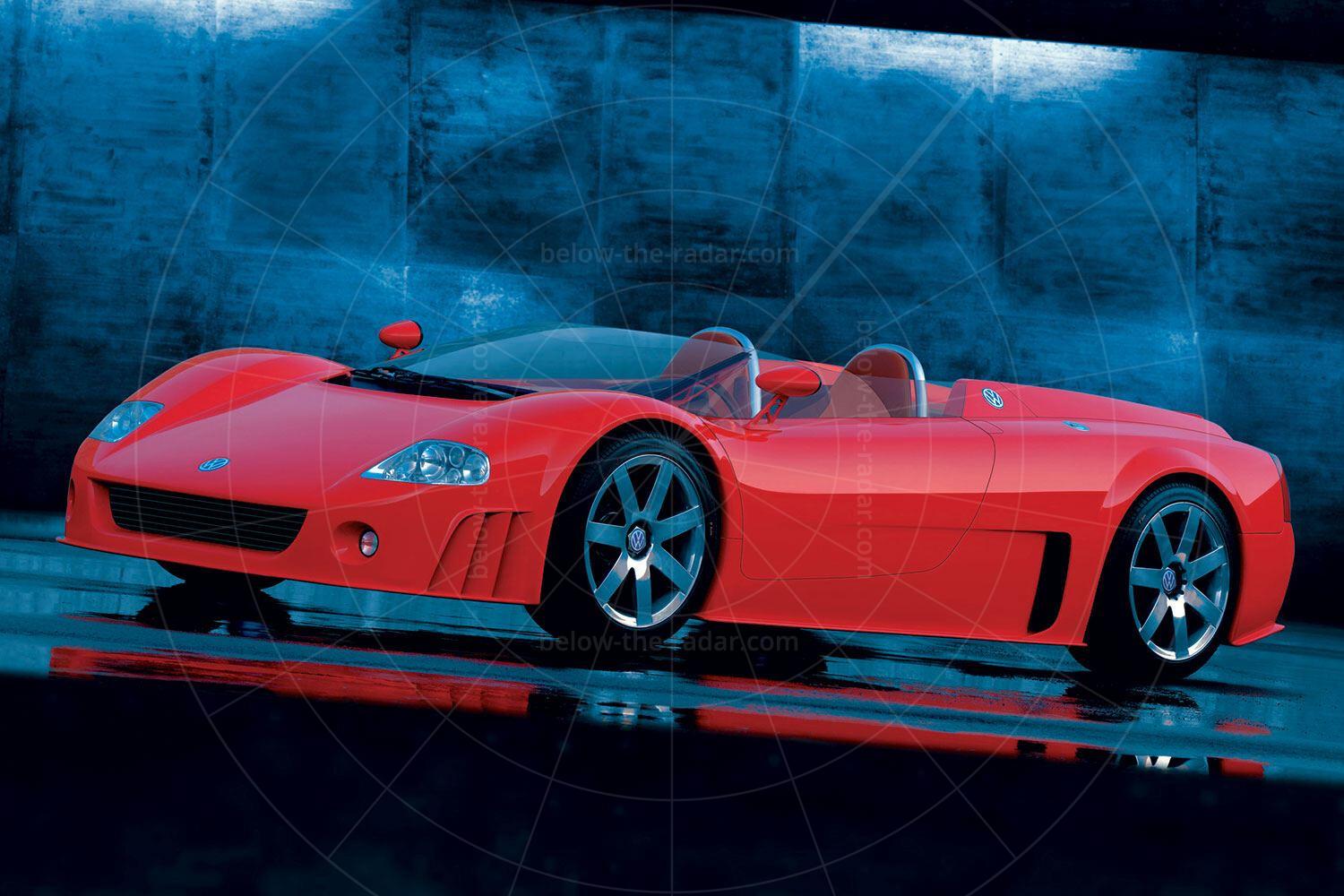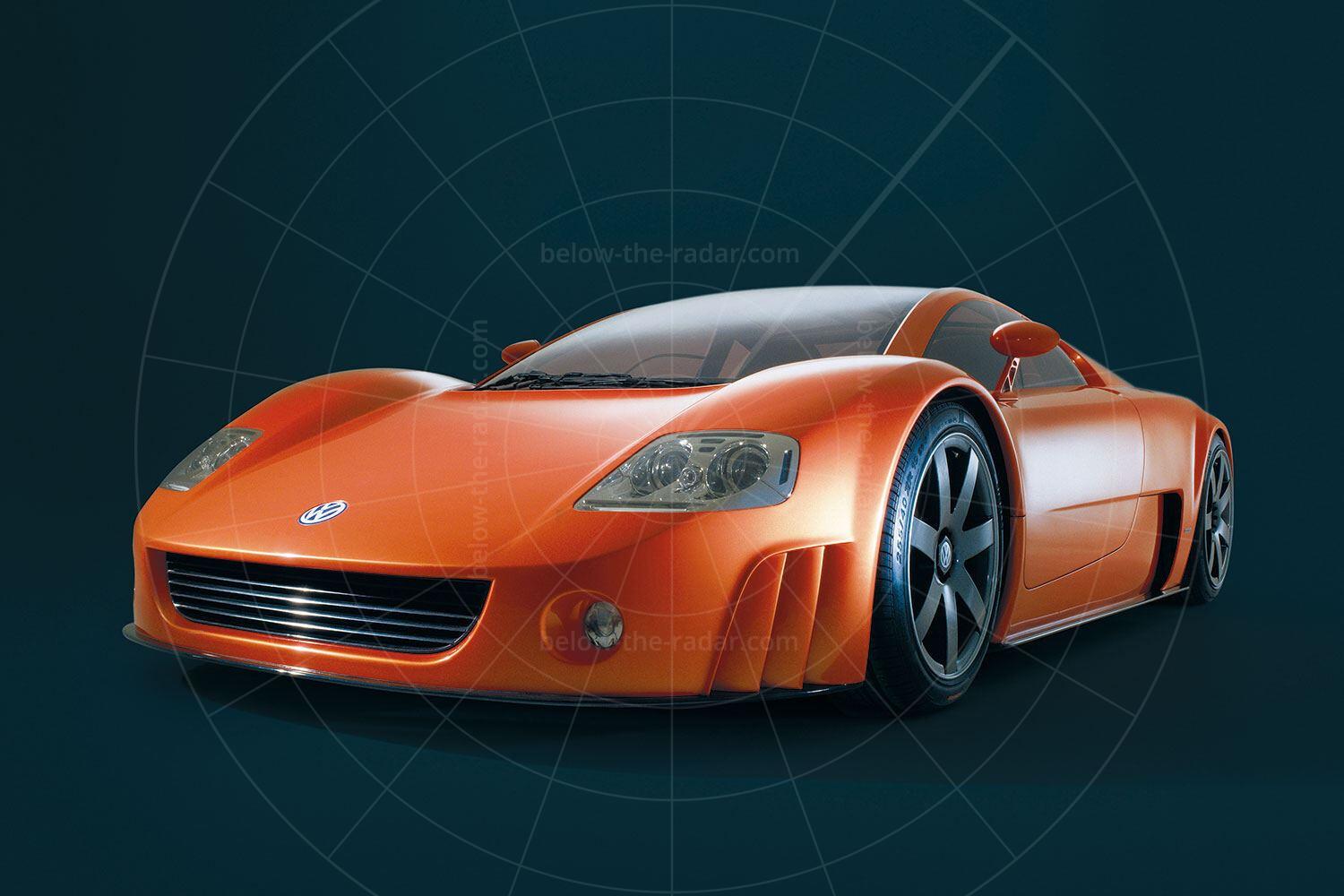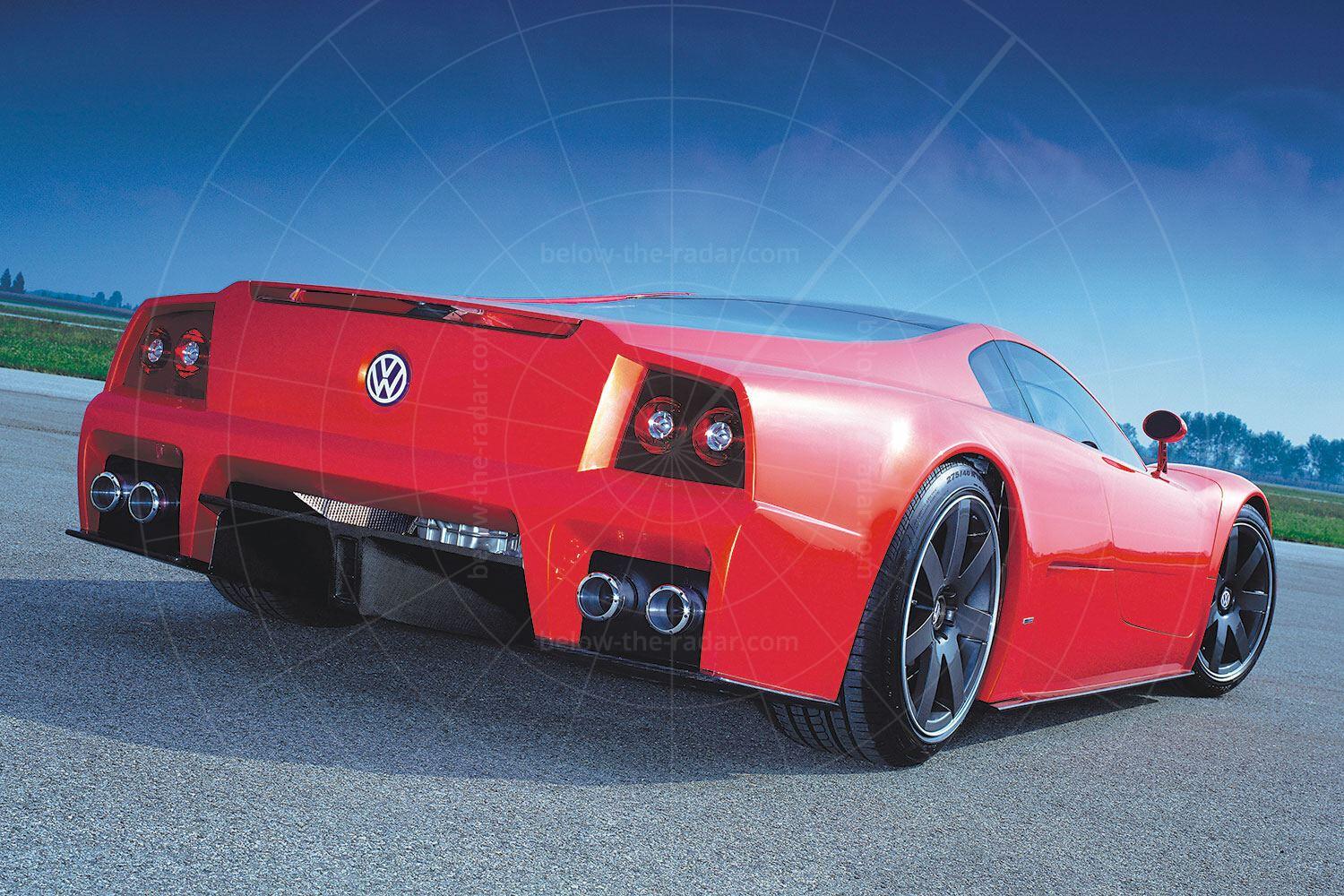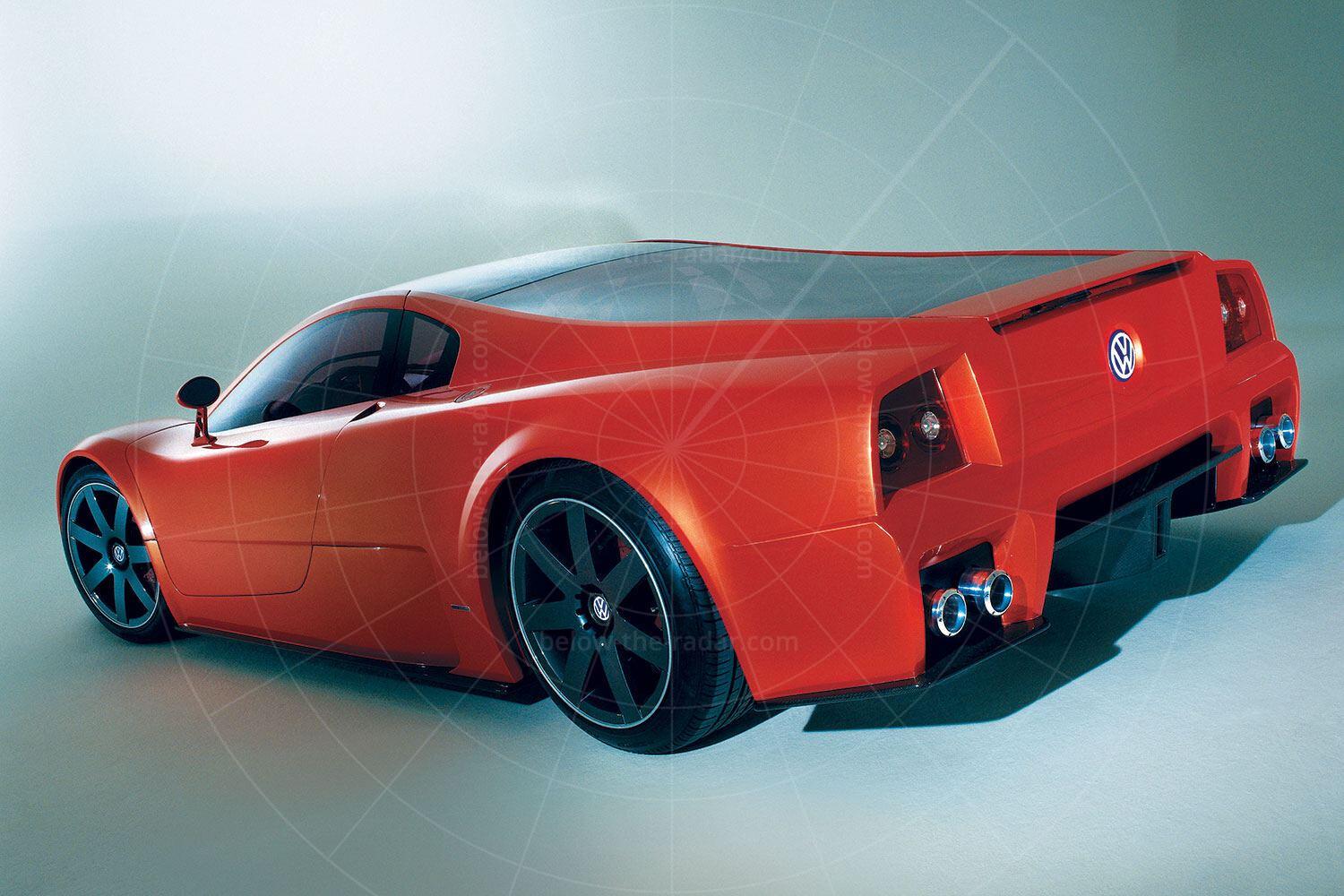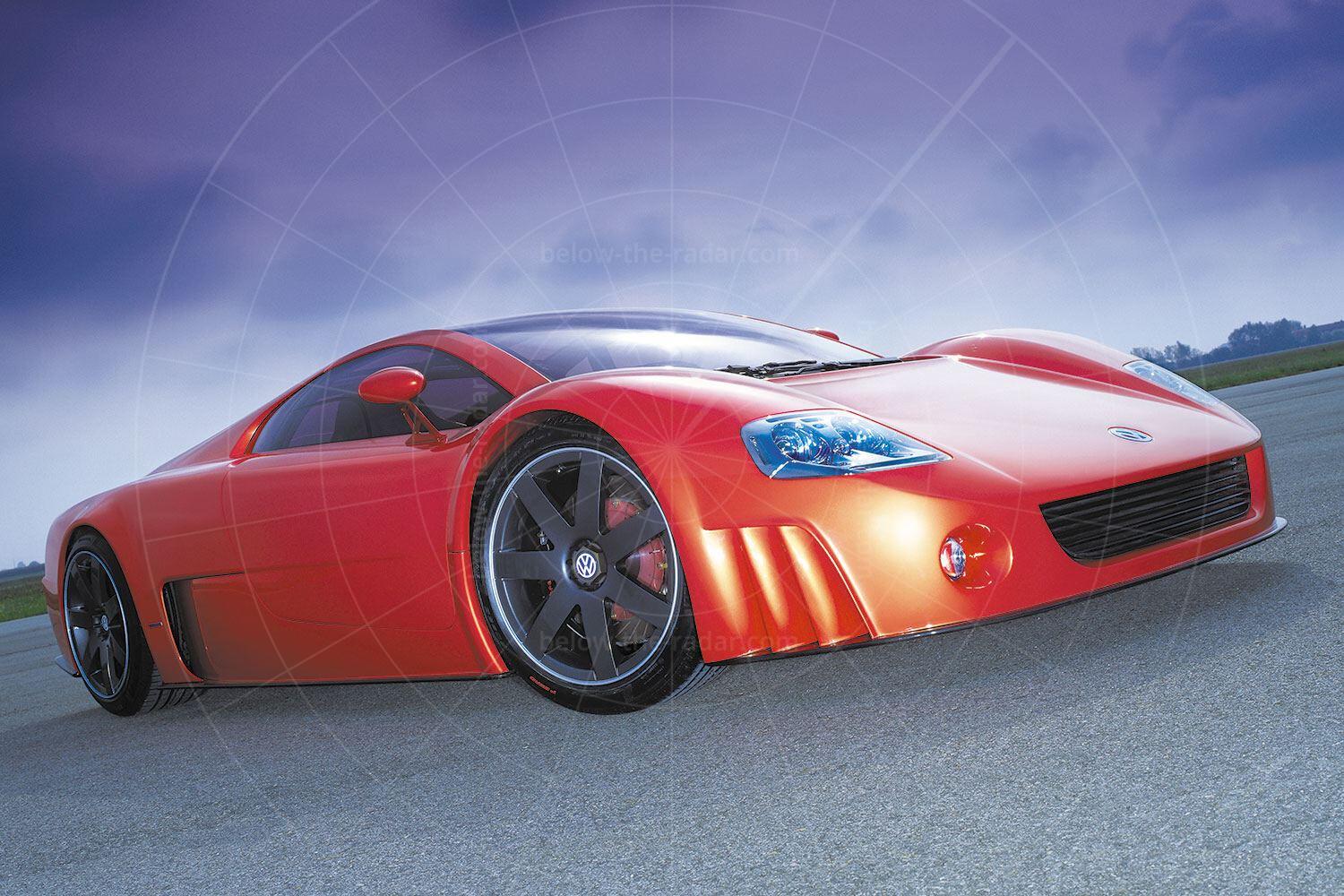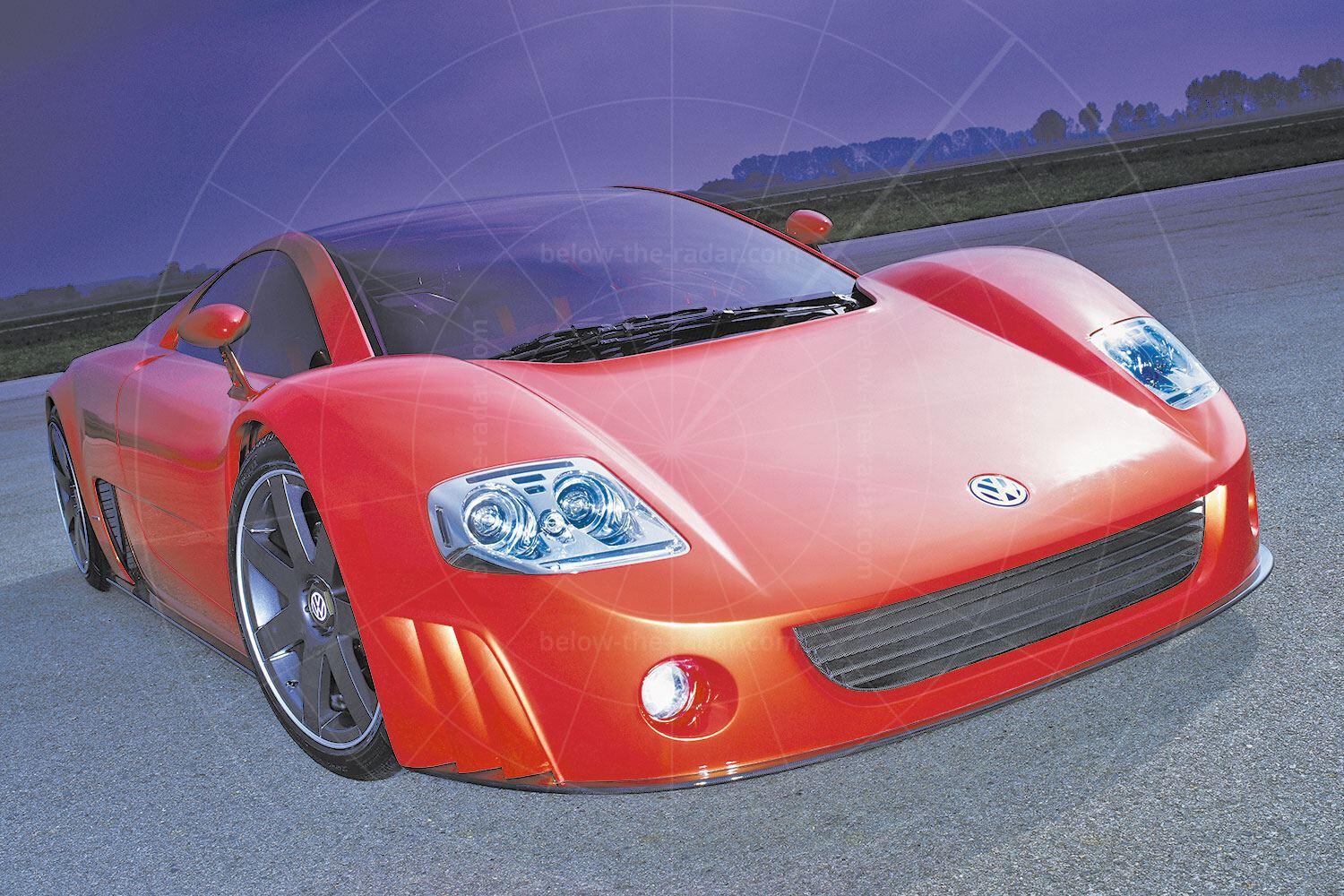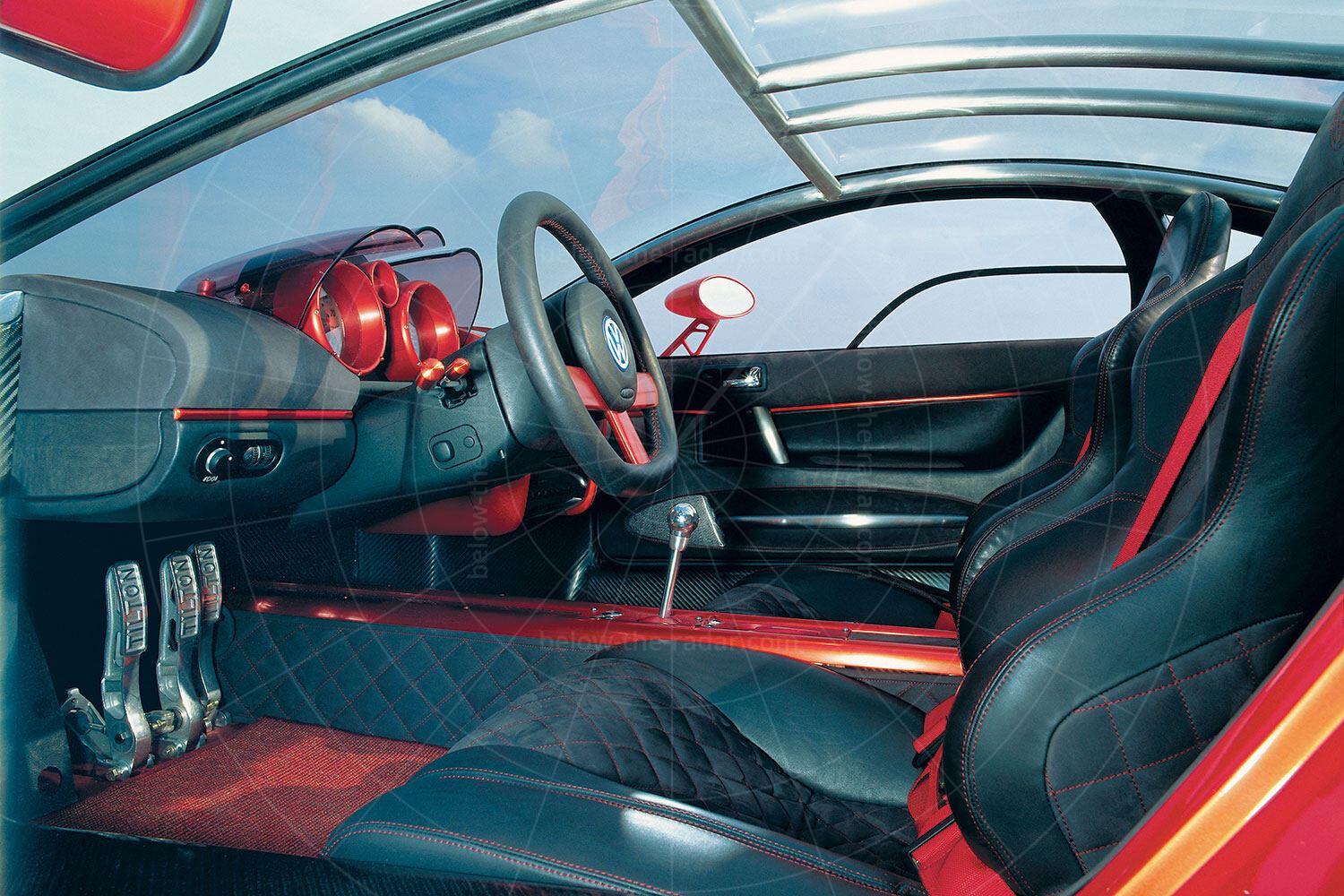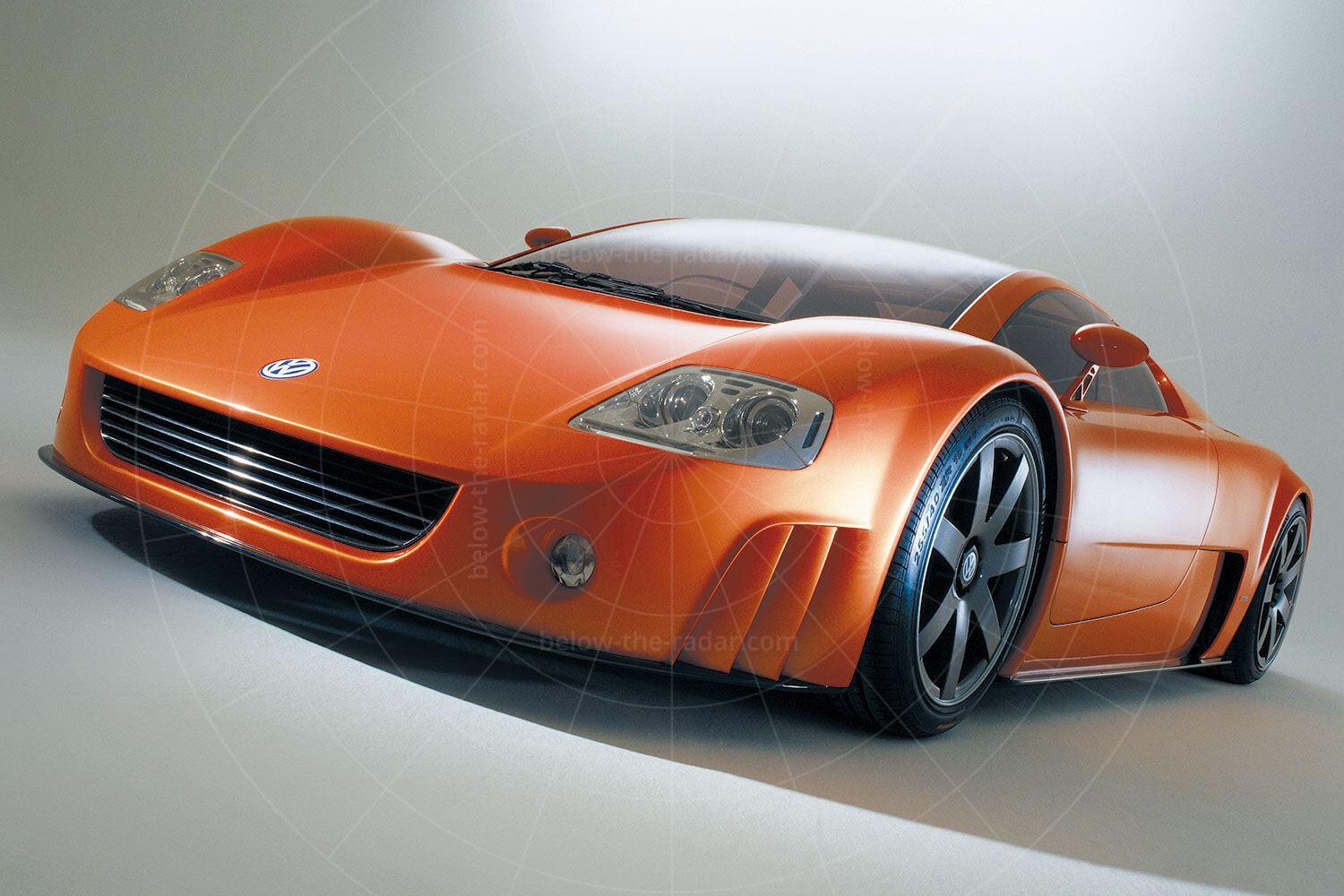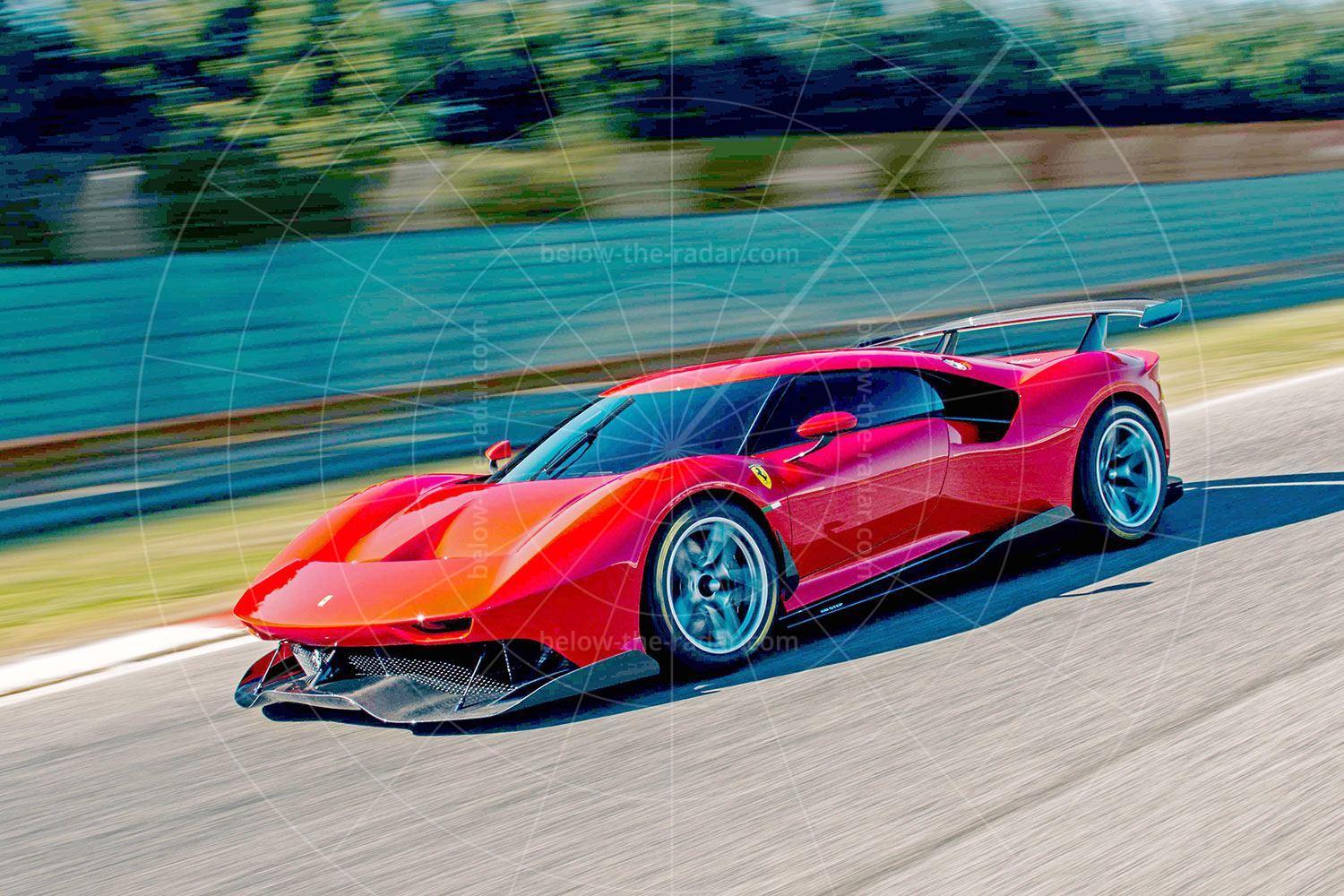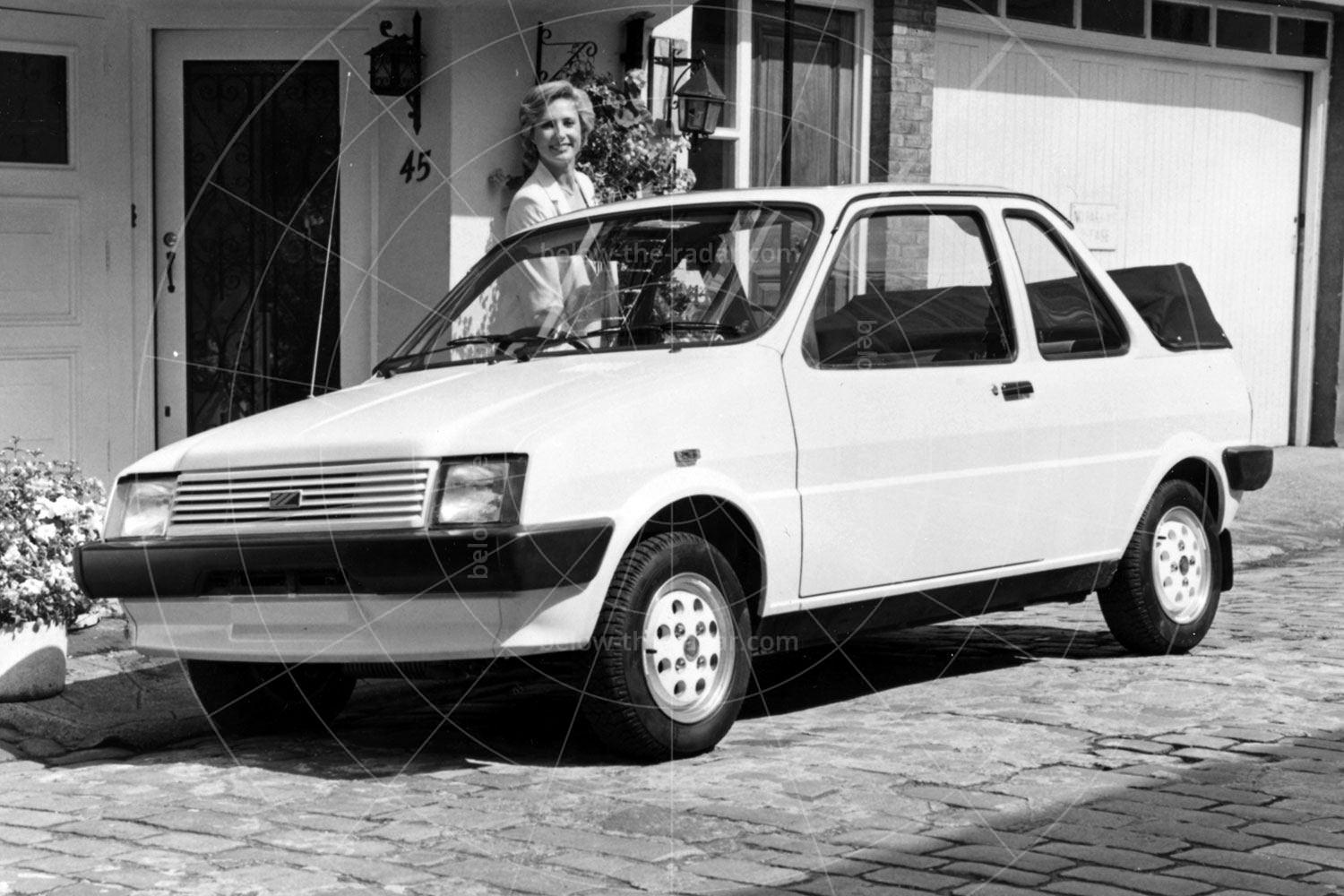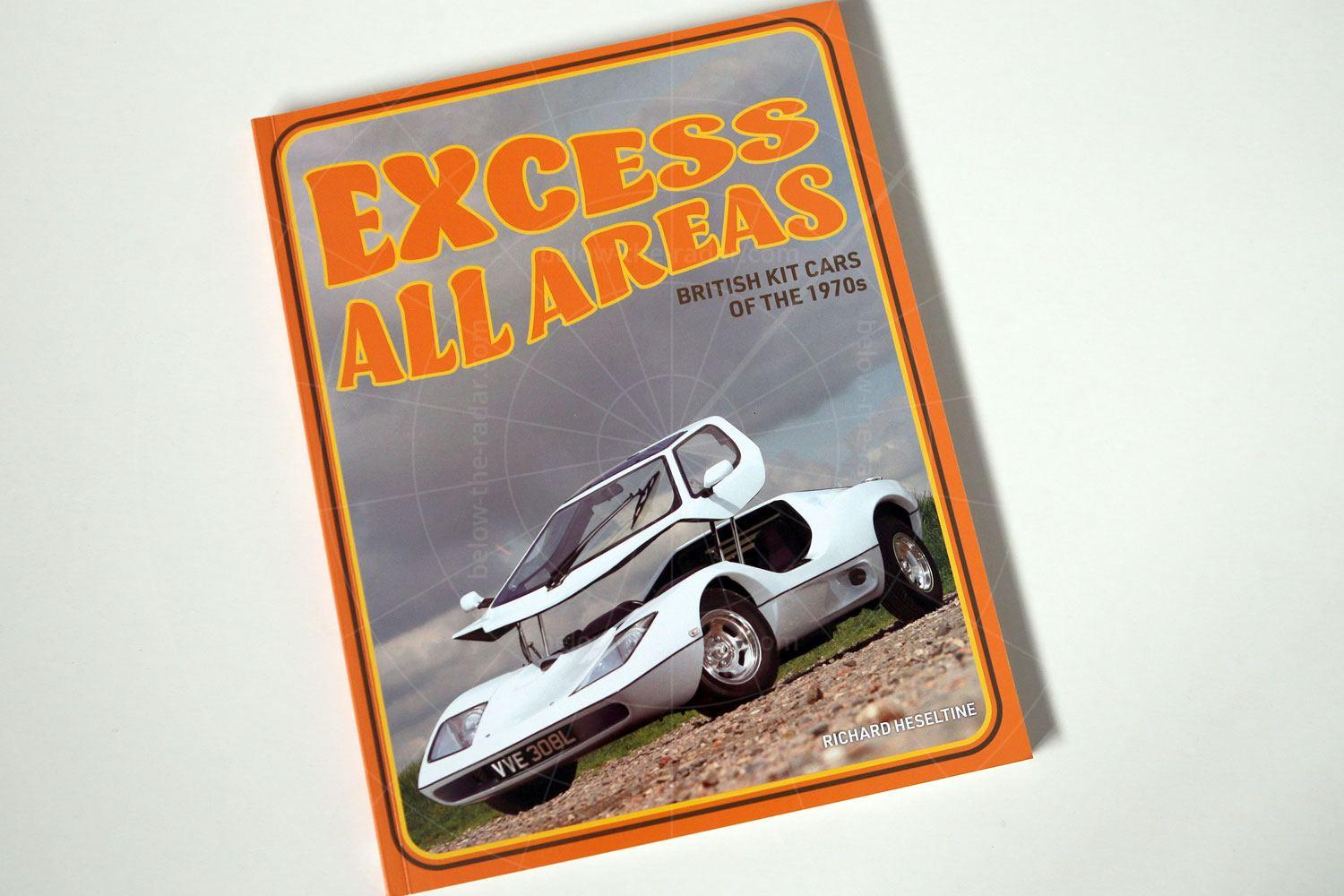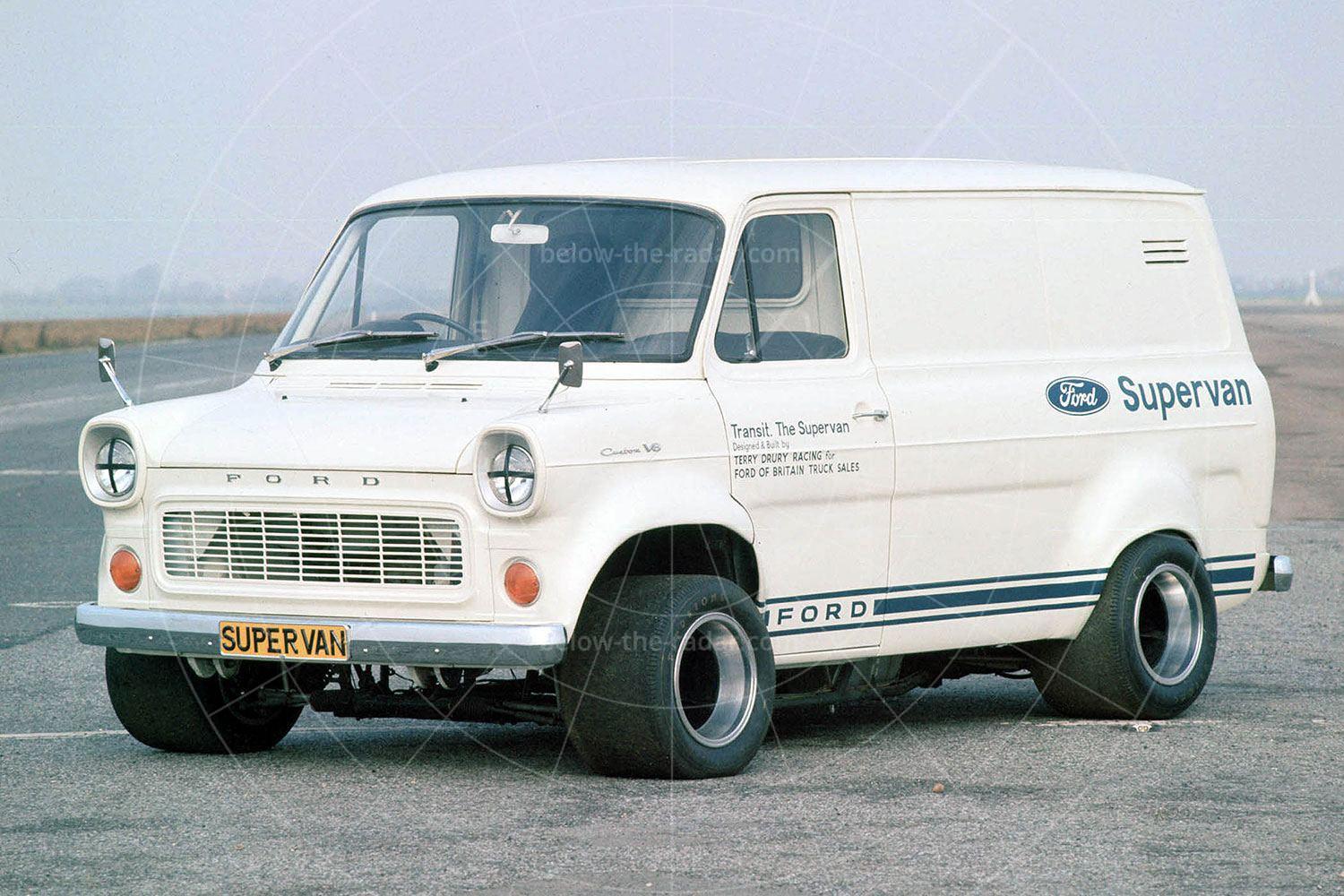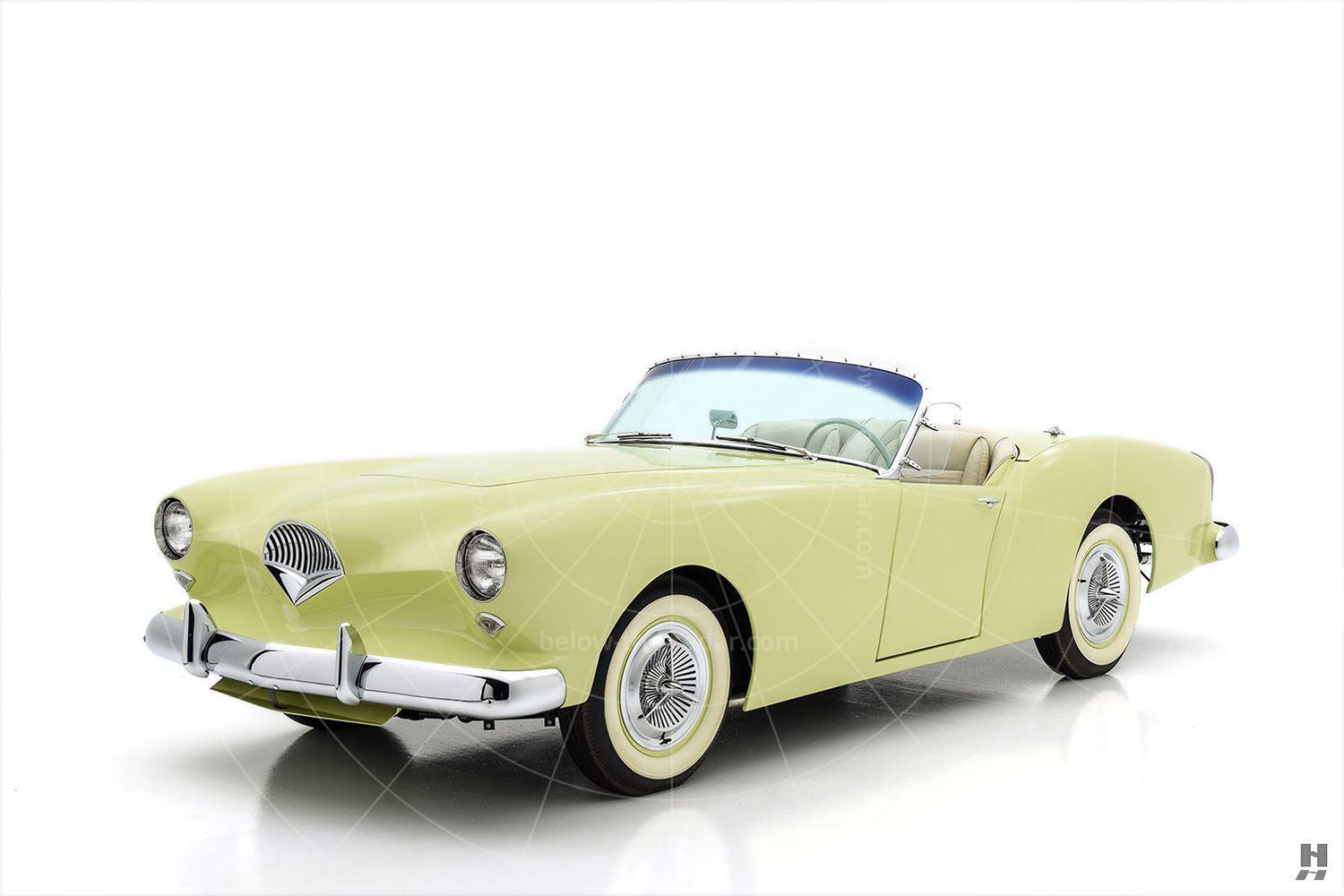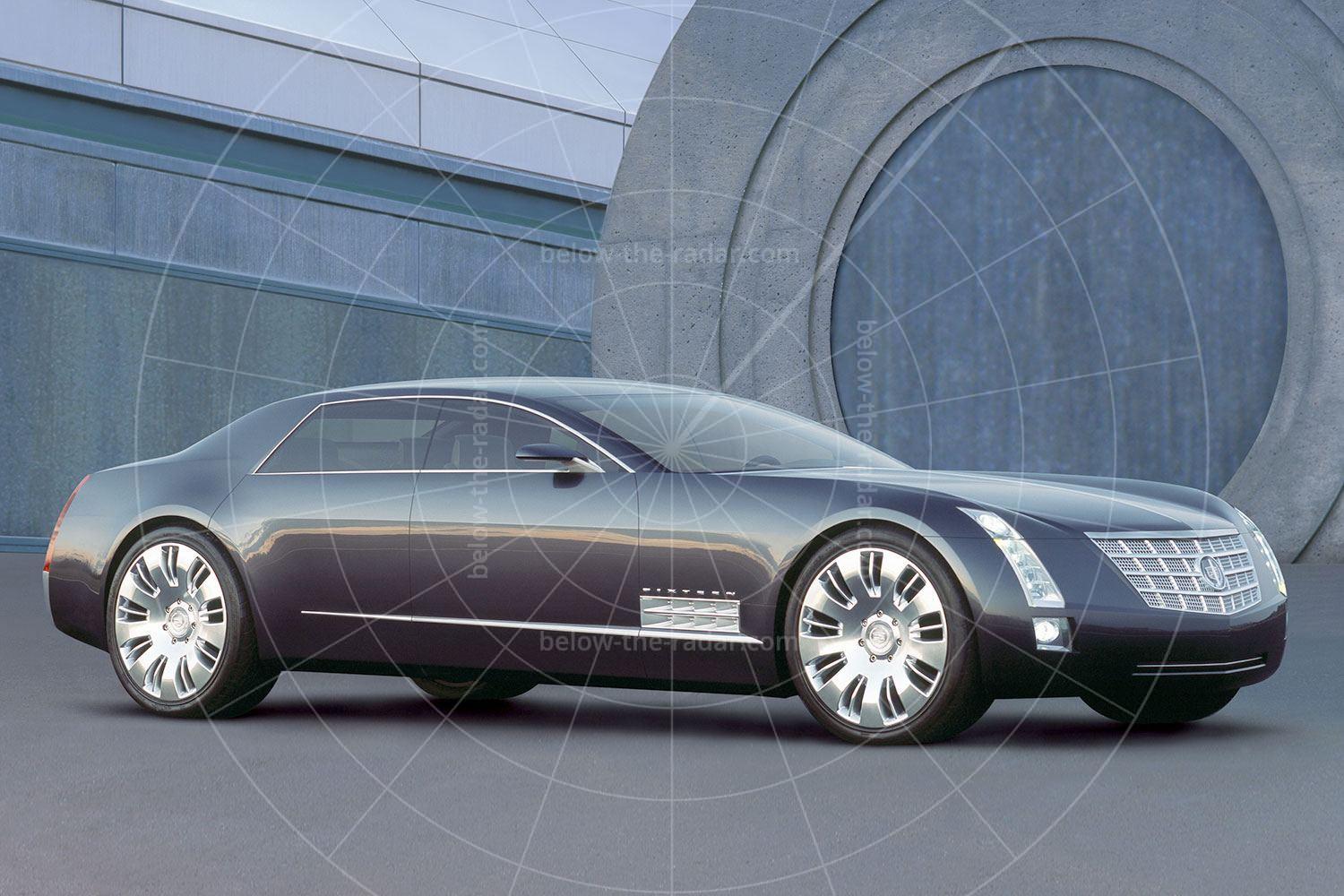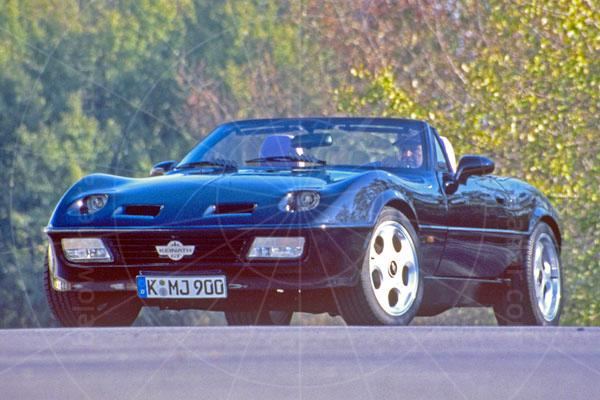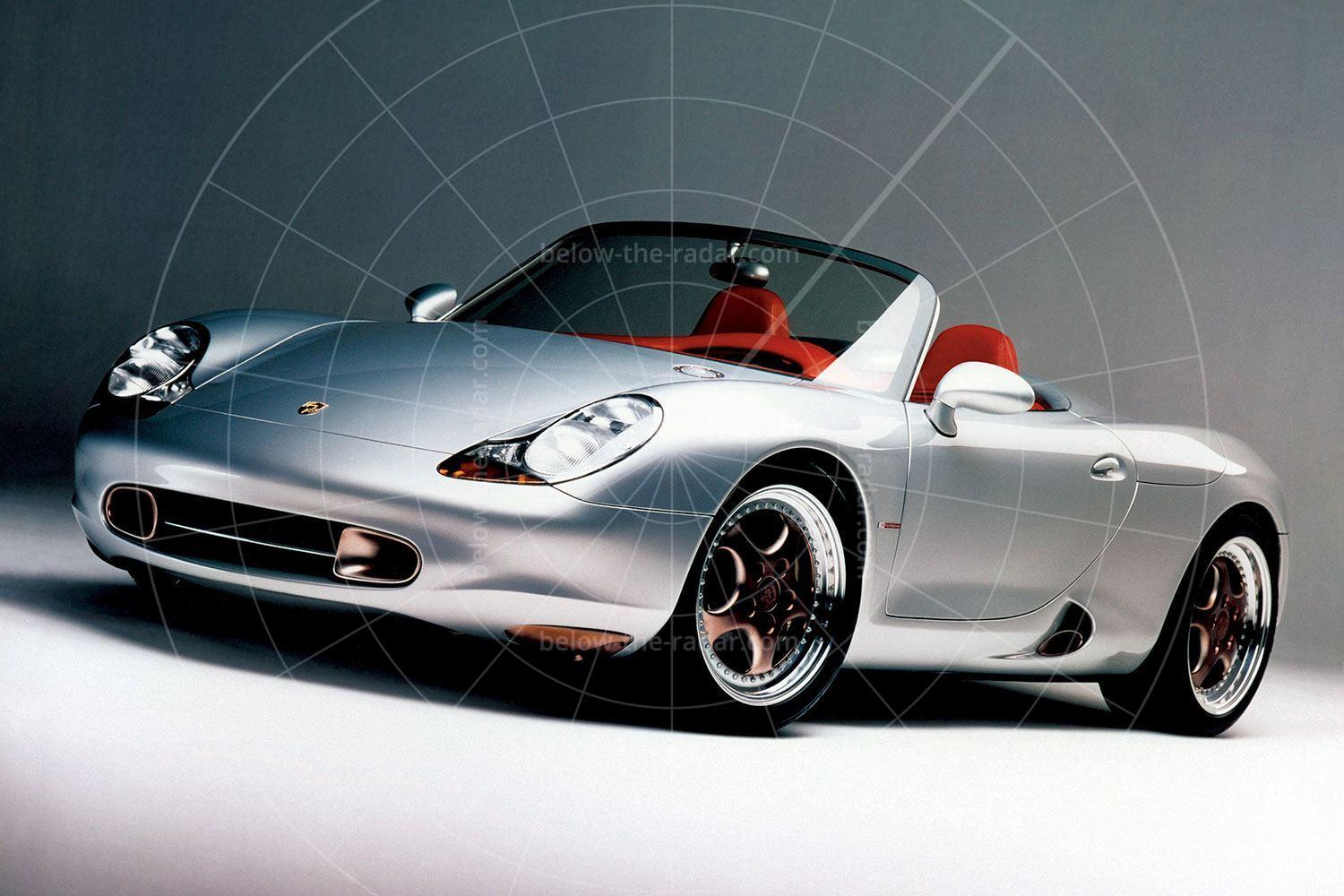Perhaps if there hadn’t been such a glut of supercars at the turn of the 21st century, the Volkswagen W12 may have become a production reality. But with so many all-new hypercars becoming available, most of them with already recognised prestigious badges, the Volkswagen wouldn’t have stood much of a chance finding buyers.
When the W12 made its debut at the 1997 Tokyo motor show, Volkswagen claimed it was just a one-off, but if the reaction to it was favourable the car might be made available in limited numbers. Unsurprisingly most commentators thought the car was fantastic, but the fact that it carried Volkswagen badges didn’t help. Perhaps it was that alone which was enough to scupper the project ultimately, but it certainly didn’t die very quickly because at the 1998 Geneva motor show a roadster version of the W12 was unveiled and then at the 2002 Geneva motor show both ItalDesign and Volkswagen were each parading a W12 coupé on their stands. But soon after that it was revealed the project was dead; the Volkswagen Group had enough supercars on its hands trying to make the Bugatti Veyron work as well as getting two new Lamborghinis to market, the Murcielago and Gallardo.
The reasoning behind the W12 was that it could be used by Volkswagen to take on the Mercedes CLK GTR at Le Mans; successfully racing in the GT1 class would give Volkswagen some much-needed credibility in the world of international motorsport. And with the engine fitted to the concept, there wouldn’t be any problem tuning it to produce a reliable 700bhp for endurance racing.
Under the skin of both the coupé and roadster the mechanicals were largely the same, although the coupé was a non-runner and the roadster was fitted with a five-speed automatic gearbox. The W12 engine consisted of a pair of V6 engines mated to each other to produce a W12 unit; there were four banks of three cylinders, which meant plenty of combustion chambers but very compact dimensions.
Thanks to its 5.6-litre capacity there was a healthy 420bhp on tap, but Volkswagen claimed an extra 60bhp would be easily attainable. This power was transmitted to all four wheels via a six-speed manual gearbox, with a viscous coupling ensuring the wheels with the greatest traction received the greatest amount of torque.
To keep weight down the W12’s monocoque was constructed of kevlar, over which was draped a glassfibre skin. By taking this route the total weight could be kept down to around 1200kg, which VW hoped would be low enough to get the car from a standing start to 60mph in not much more than four seconds.
The profile of the W12 incorporated the domed-roof design that was by this stage a characteristic of Volkswagens, while the doors were hinged at the top front corner to swing upwards in true supercar fashion. Also following the supercar convention was the choice of wheels: monster (for the time) 19-inch alloys were fitted, with 255/40 tyres on the front and 285/35 rubber at the rear.
To retain public interest in the W12 a slightly reclothed version was shown at the 2001 Tokyo motor show, which Volkswagen interestingly claimed was built to a production standard. Although the car was basically the same as the original coupé, there was a different front end featuring reprofiled wings, while the front and rear lights were also updated. Meanwhile the colour was changed to orange: the first coupé had been yellow while the roadster had been red.
More significantly, the engine was uprated to 6.0 litres, which was enough to push power levels up to 600bhp. This in turn increased the top speed to 217mph while the 0-62mph time dropped to just 3.5 seconds. The W12 would have been quite a car whichever engine had been fitted, but sadly it was not to be…
| Vital statistics | |
|---|---|
| Debut | Tokyo, 1997 |
| Engine | Mid-mounted, 5584cc, W12 |
| Transmission | 6-speed manual, four-wheel drive |
| Power | 420bhp |
| Top speed | 160mph |

